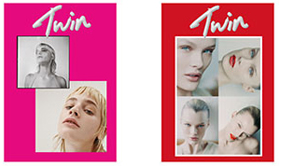Ibiza ’89 by Dave Swindells
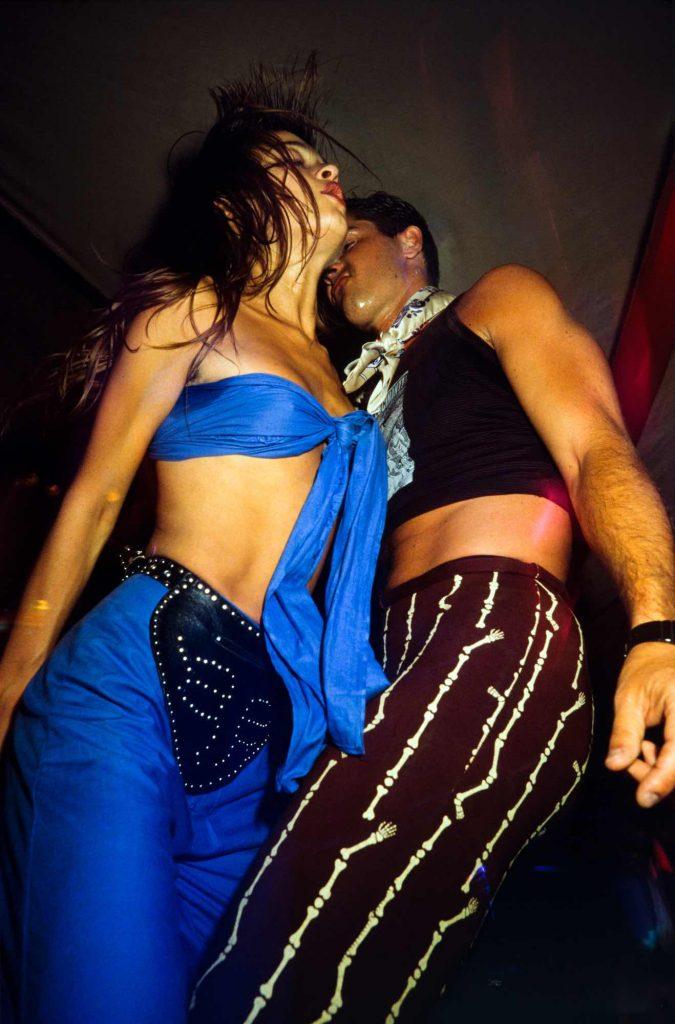
IDEA, the publisher and bookseller of Dover Street Market London, New York, Los Angeles, Tokyo, is back with its incredibly popular–sell out in the blink of an eye–coffee table book, Ibiza ’89 by Dave Swindells.
An expansive vibey photo book, the title perfectly captures the hedonism of the White Isle, as seen through the lens of Dave Swindells. Here, he documents one fun-filled week spent in and outside the likes of Pacha, Café del Mar, and Amnesia; after all, he’s famously been photographing nightlife and people since 1983.
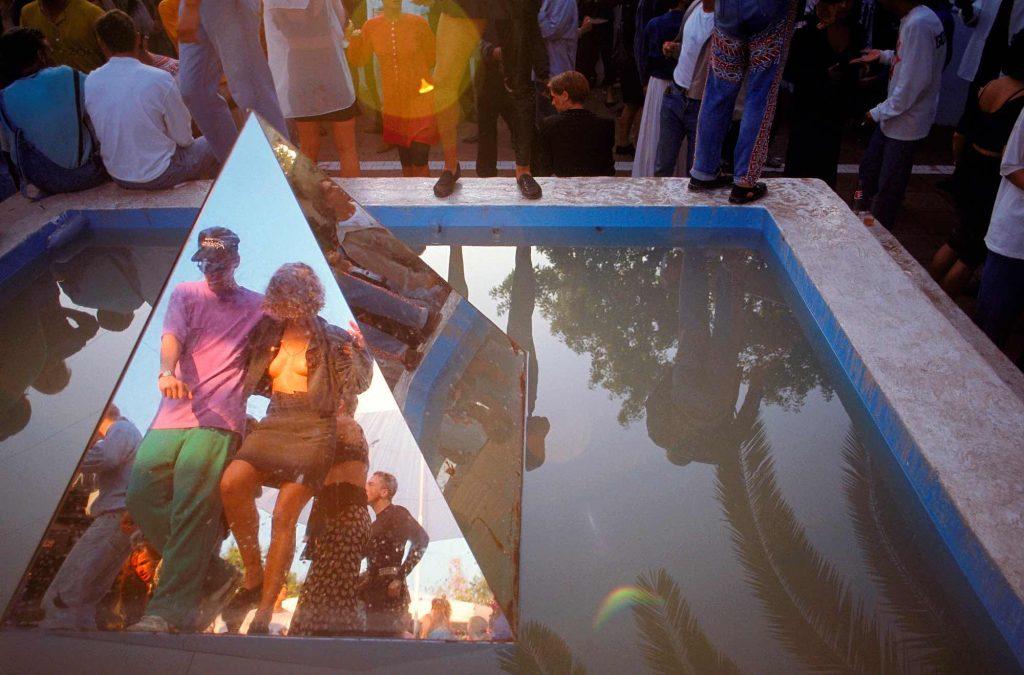
“It was easy to believe that almost anything was possible in Ibiza in 1989; that many of the big clubs put MDMA powder into their cocktails; that the music could jump across genres and not only be exciting, but better than the sum of its parts; that there was always another club or bar to carry on to as long as you wanted to carry on; that it didn’t really matter about your age or sexual preference or how much money you had if you came for the fiesta and the music (although it helped to dress up to get into Pacha, and only the wealthy could buy tables overlooking the dance floors there); that there was always a secret cove or beach where you could create your own party…And all of that was pretty much true.” Dave SwindellsSnapping the Brits abroad, Dave also recalls first-hand the story of the British guy in the pink shirt framed so perfectly in the mirrored morning light of Amnesia’s terrace, “When a group of Spanish clubbers turned up at the gate I went down on all fours and crawled in behind them. Boom! I was in! The girl in the photo with me was an Italian Princess. She was with a group of people who had water pistols filled with liquid E – it was mental! That was without doubt the best night of my life.”
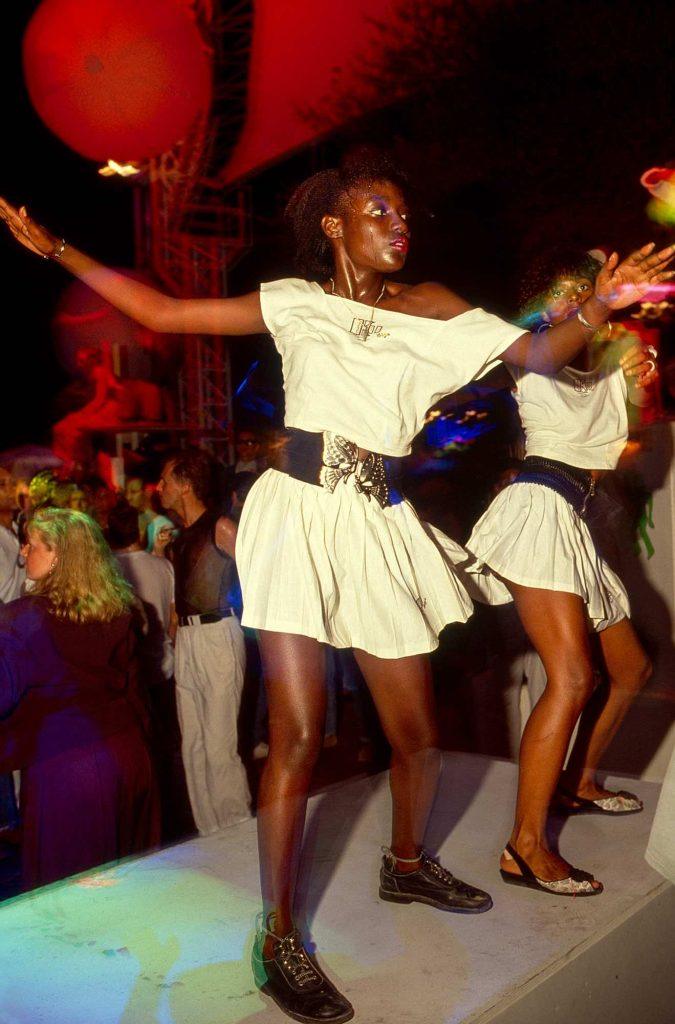
Back by popular demand, the title it now on its third edition, with four times as many photographs in the new book and has been released this week as an edition of 1,200 at Dover Street Market London.
Text: Felicity Carter
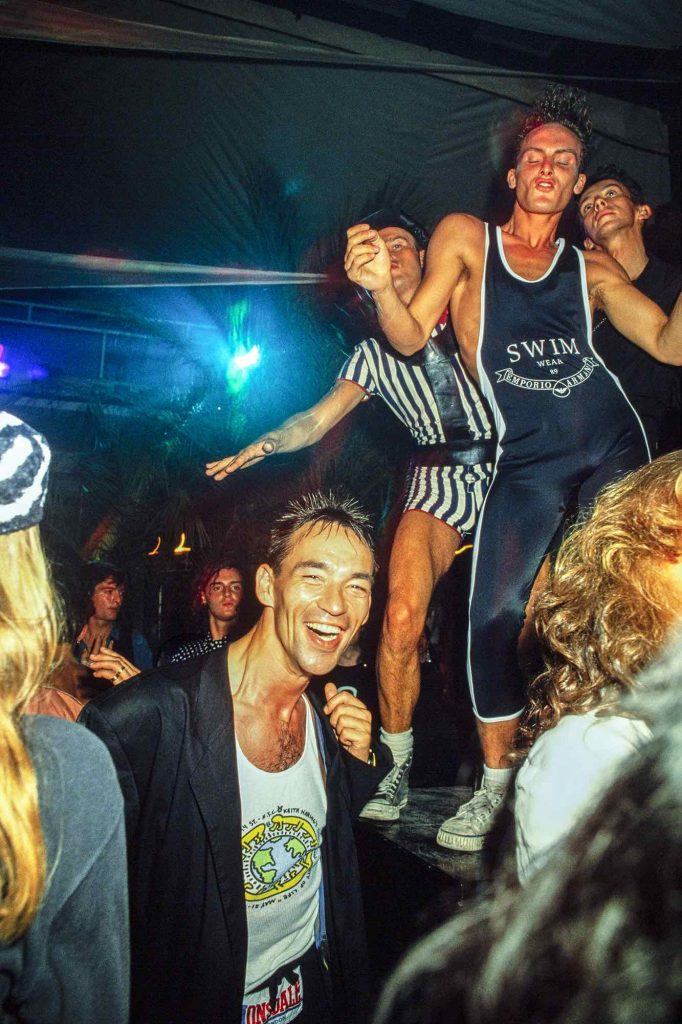
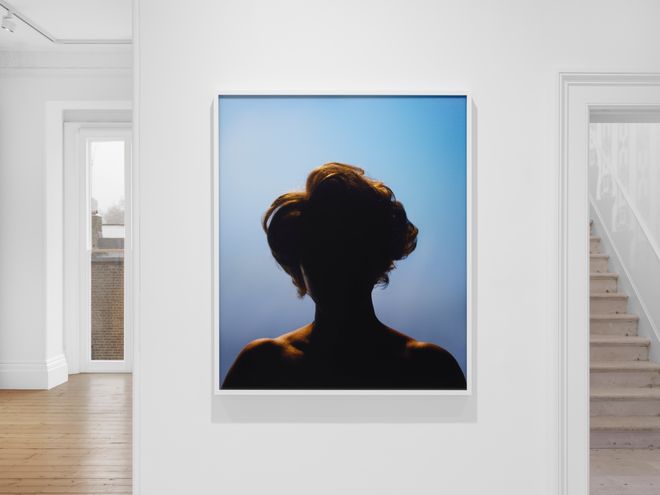
TWIN PICKS : Alex Prager
Theatrical staging, high-drama and luxurious technicolour – photographer and filmmaker Alex Prager’s large-scale photographs feature ensemble casts that teeter between reality and artifice.
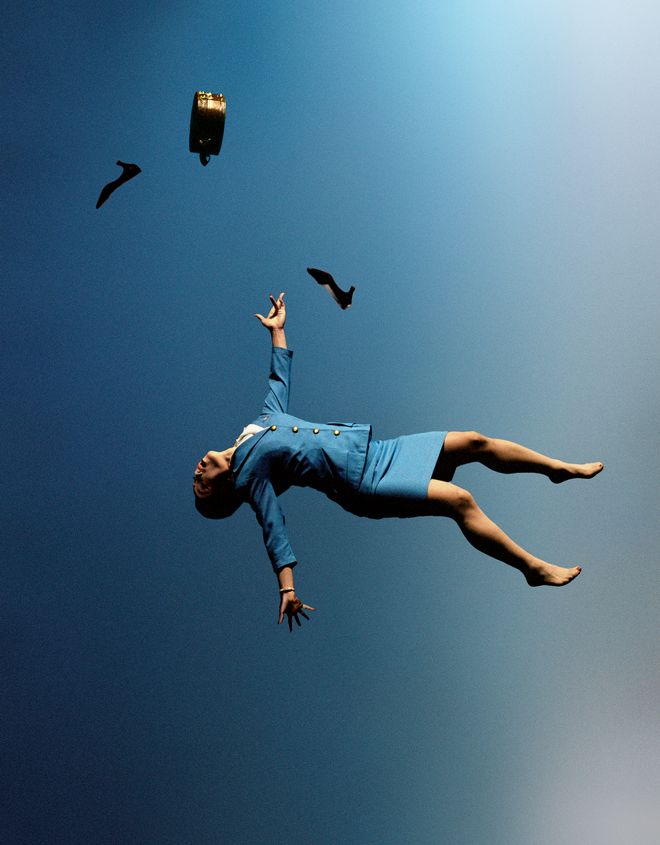
In this intimate series classic American archetypes are presented in the cinematic colour palette of a Hollywood Western. A cowboy, a cherub, an air stewardess, all frozen, suspended mid-air. Artefacts of modern American life seem to float – or fall – alongside them.
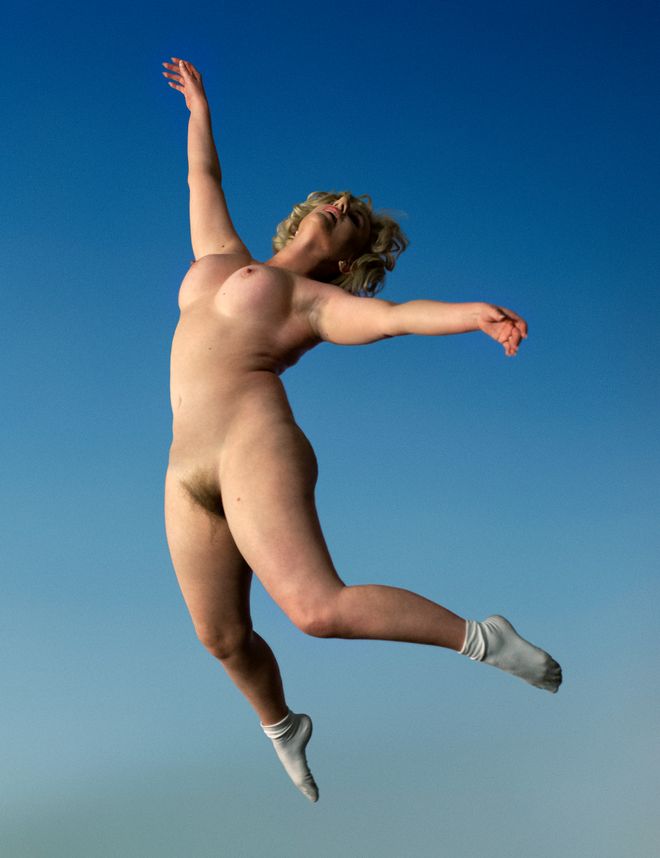
Part One: The Mountain at London’s Lehmann Maupin gallery continues her exploration of the hyperreal. The series was created as a response to the last two years and the effects of the pandemic. Prager’s meticulously constructed characters are paired with details from the character’s backstories – casino chips, prozac and a pair of high heels capture our human idiosyncrasies.
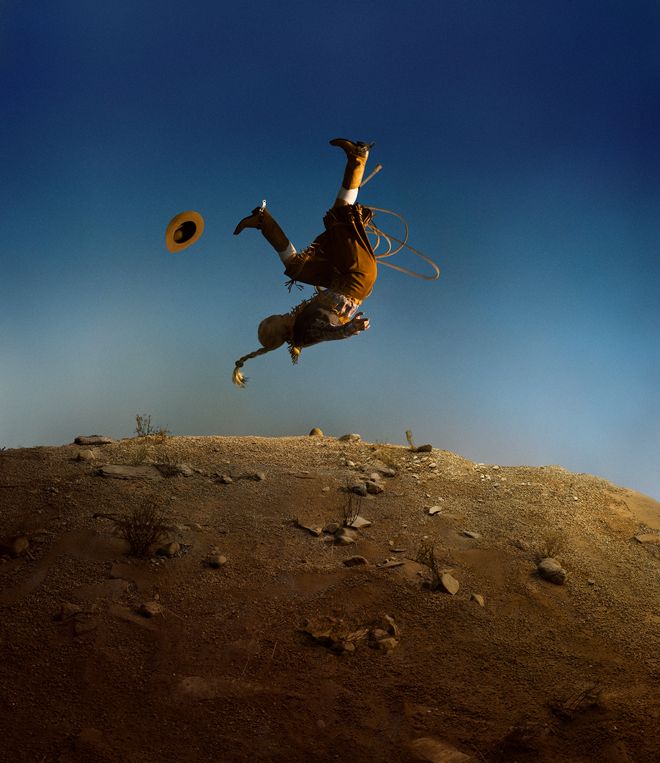
Prager plays on the tradition of classical portraiture as a way to encourage people to really look at one another again. After such a long period of isolation and polarisation, she works to flatten people out and then hone in on our emotional states. These questions are infused into each portrait, creating a spiritual death and consequently – rebirth. Shot in her hometown of Los Angeles, The Mountain draws on the themes of revelation, pilgrimage, achievement, and adversity.
Alex Prager’s Part One: The Mountain is at London’s Lehmann Maupin gallery until March 5 2022.
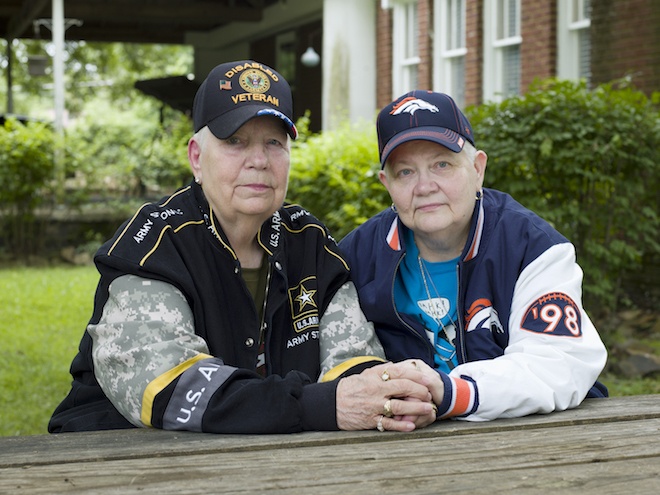
To Survive On This Shore – A Compelling Visual Documentary of the Older Trans Community
All images are Courtesy of the Catherine Edelman Gallery, Chicago
Cover Image: Hank, 76, and Samm, 67, North Little Rock, AR, 2015
Over the past five years photographer Jess T Dugan and social worker & professor Vanessa Fabbre traveled throughout the United States in documentation of the stories and imagery of transgender and gender nonconforming older adults in the country. Traveling from coast to coast , the duo sought out subjects whose experiences of life exist in the intersections of gender identity, age , race , ethnicity , sexuality, socioeconomic background & geographic location. The result of their venture, a moving body of work giving voice & visibility to an underrepresented group of older individuals with a wide variety of narratives spanning throughout the last ninety years, offering a historical record of transgender experiences & activism in the USA in the form of a book and several exhibitions.
“So many trans-related stories in the media are about people being murdered orare about discrimination of some kind. With this project, I wanted to create representations of many different ways of living and aging as a trans person. I also wanted to record the history of people who, in many cases, paved the road for the world we live in now. I worried their stories were at risk of being lost or forgotten, and I wanted to record and preserve them,” explained Jess T. Dungan.
“For me, part of the inspiration for this project also came from thinking about the limits of knowledge dissemination in the social sciences, especially in terms of our ability to engage in broader cultural forces and public discourse. I saw the potential to make an impact beyond academia by creating this project together, ” added professor Fabbre.
Each story, each image captured and included in the photo series, shines a brighter light on stories that have been long overlooked, and in many ways creates blooms of hope and validation for onlooking generations of trans individuals.
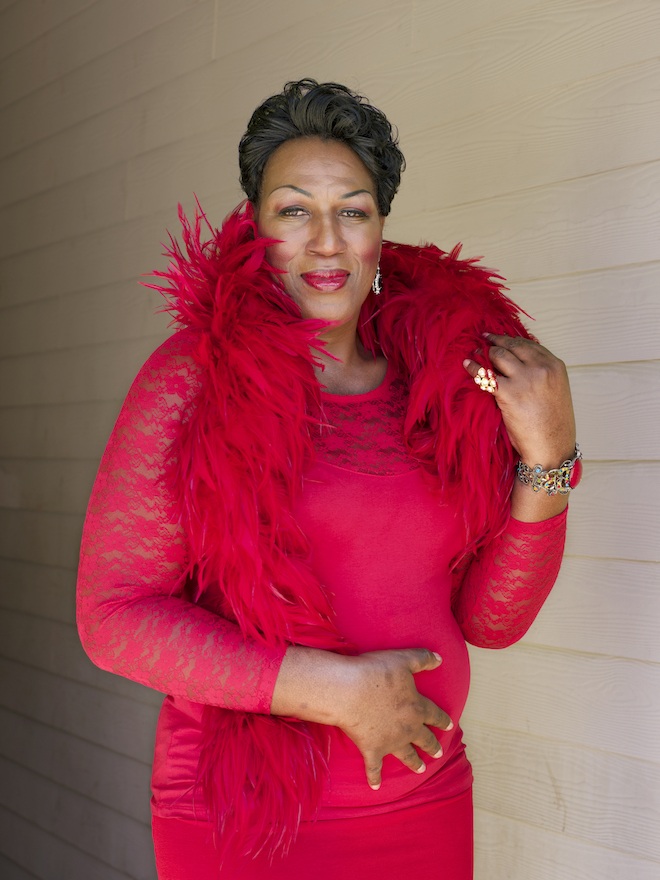
“This coming into my real, real fullness of knowing why I was different is because I was expressing my spirit to this world. And I didn’t know how God felt about it, but I believe in God and I have a deep spiritual background and I talk with the Holy Spirit constantly who’s taken me from the Lower West Side doing sex work to being at the White House.” – Dee Dee Ngozi .
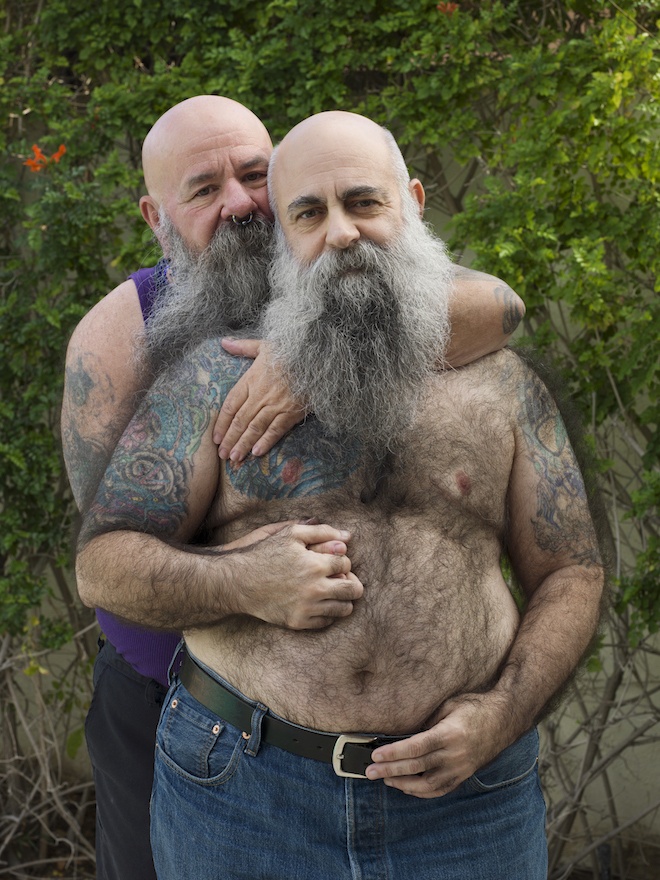
“One of the hardest things in terms of transitioning was the difference in personal space. When I was perceived as female, there wasn’t a lot of touching. Women don’t get into each other’s space. When two women are attracted to each other they don’t immediately put their hands on the other woman’s body. It’s not considered appropriate. Whereas the way men cruise, there’s about two seconds of eye contact, and then an approach, and either hands on your chest or hands in your crotch or some other type of immediate physical contact.I started out with a lot of insecurity in terms of my body, insecure about myself, and it has taken time to build confidence.” – Mike
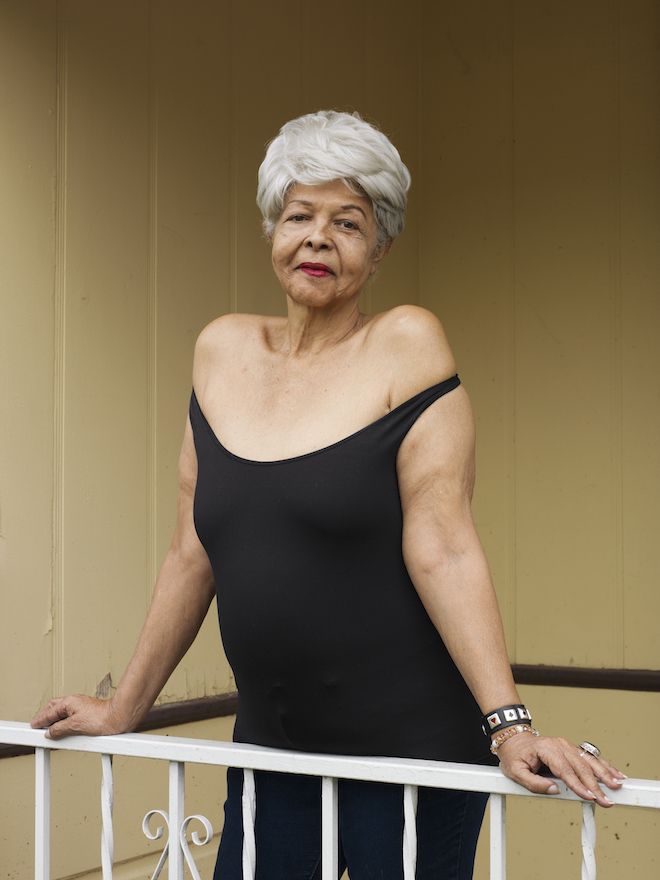
“I just know I’m me. I don’t think in terms of names and forms and all that. It doesn’t matter.I’m just myself and that’s who I am.I am at peace with myself. It is the most wonderful feeling in the world because you’re never in a hurry to get somewhere, you know, to prove to anyone that you’re who you know you are. I know who I am, and what other people think about me is none of my business. So that’s who I am. I identify as the Duchess.
I knew that I might lose family, that people might reject me. But I weighed that, and I thought,“If I lose everything and everybody, but I keep me, that’s all that matters. That’s all that matters, because I’m not going to live a life that I’m not happy in, for other people.Why?It doesn’t make any sense.”So I put my money down and took my chances. My family accepted me. They came to accept me, and I’ve had kids around me, I’ve gone to all the weddings, all the funerals, and it’s a situation that everybody just thinks of me as who I am. It’s not even an issue anymore. “Oh, you mean her? Oh, that’s just Auntie.” – Duchess Milan
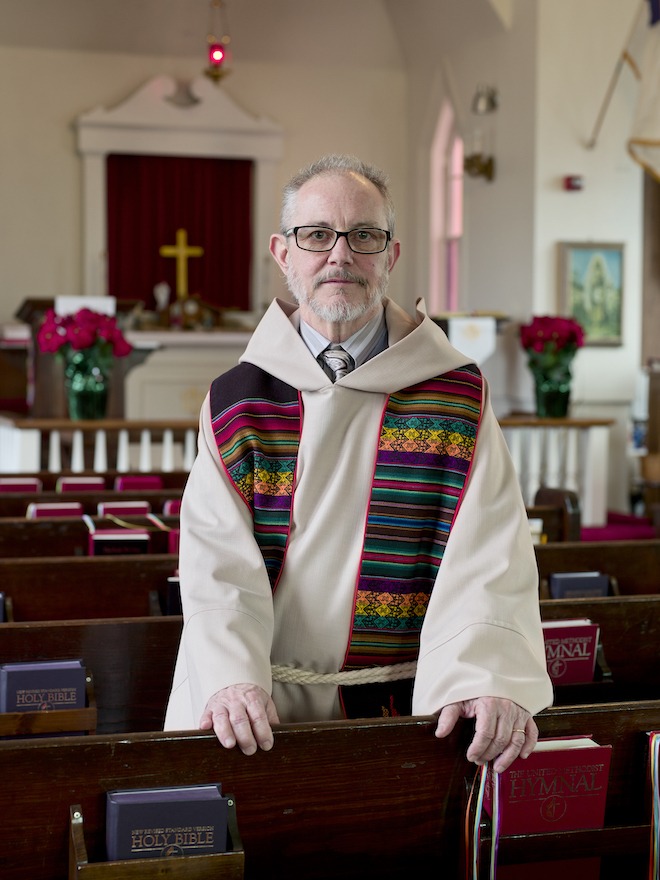
“When I was five years old,I found my older brother’s first communion suit. It was a very cool looking suit, white and double-breasted, and it fit me perfectly. I wouldn’t take it off.I wore it everyday. Day in and day out, until my parents got so tired of seeing it on me, they turned it into a Halloween costume as a way to get rid of it.When I was older,I played in this little rock band and one time whenI was over at my friend’s house I heard his mother mention a story about a person named Christine Jorgenson who had “changed sex.”I couldn’t keep my mind on practice after that!I wanted to find out more about this person, but you couldn’t Google it, of course, and so it took me months to find it. I was finally able to piece together that this was a person who knew their gender and went somewhere and there were people who could help.” – David
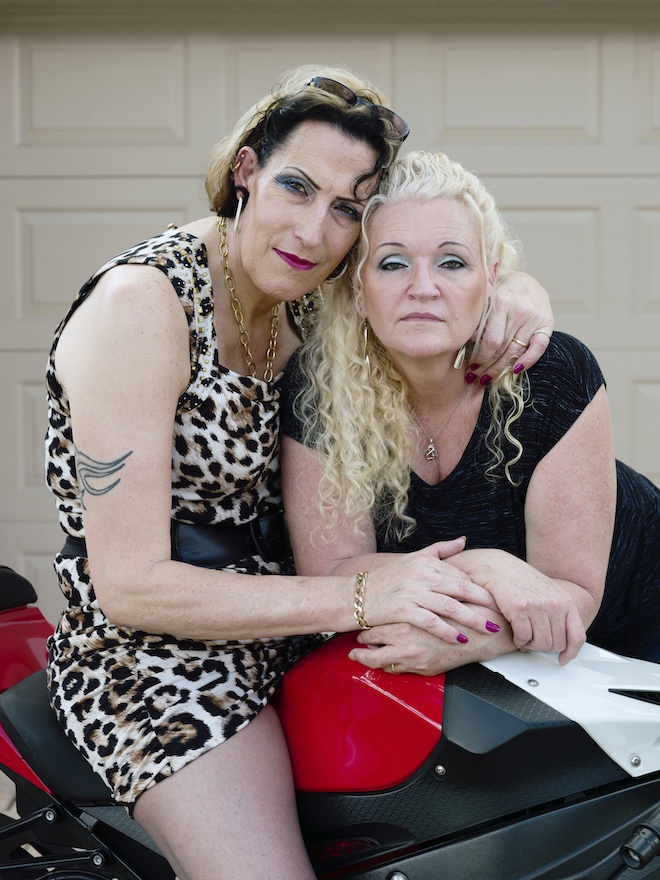
“When we got married, I never imagined that someday my husband would become my wife,” Cheryle said. “Right from the start, SueZie confided that she identified as female on the inside, but transition never appeared to be an option. But, I never had a problem with her wearing lingerie. You know, it’s just clothes. I fell in love with the person inside, and what’s on the outside is more about what they feel comfortable with.”
For more information on the ongoing exhibition and book purchases visit To Survive on This Shore.
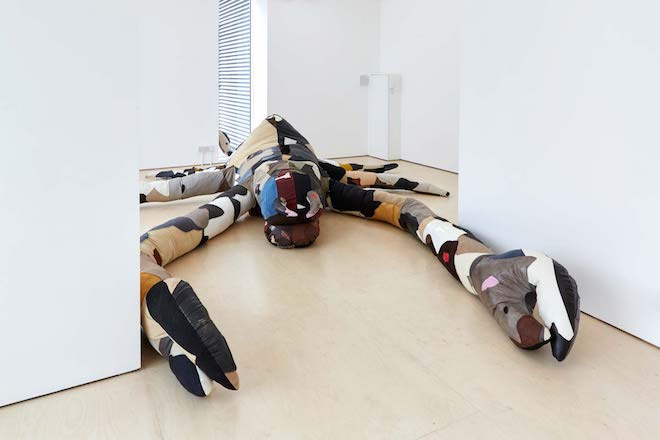
Dark Air: A Solo Show by Gray Wielebinski
Born in Dallas Texas, artist Gray Wielebinski uses their practice to explore the ways in which gender and sexuality intersect with other structures of power and identity, often referencing their body and journey as an individual who is currently undergoing the transition from female to male.
Working between London and Los Angeles in print, video, performance, sound, sculpture, and installation, Gray moved to London in 2017 to complete a masters in Fine Art Media at The Slade. Since then, Gray has exhibited internationally and is currently an artist in residence at The City & Guilds of London, alongside Taku Obata and Alistair Gordon.
Using a variety of strategies to explore identity, specifically their ambivalent relationships to masculinity, Gray’s more recent research and practice uses sports for both aesthetics and metaphor as an entry point to examine themes such as national identity (specifically the US and Americana), desire, myth making, surveillance, hierarchies, race, and gender. In Dark Air, the artist’s first solo exhibition at SEAGER gallery curated by Martin Mayorga and Vanessa Murrell from DATEAGLE ART, we observe Gray’s ongoing exploration of sporting ceremonies as seen in the artist’s personalised football scarf stand. Located at the entrance of the gallery space, the piece highlights the ritualistic yet commercial nature of the sport, while also reiterating the entwined nature and relationship found between myth and sport.
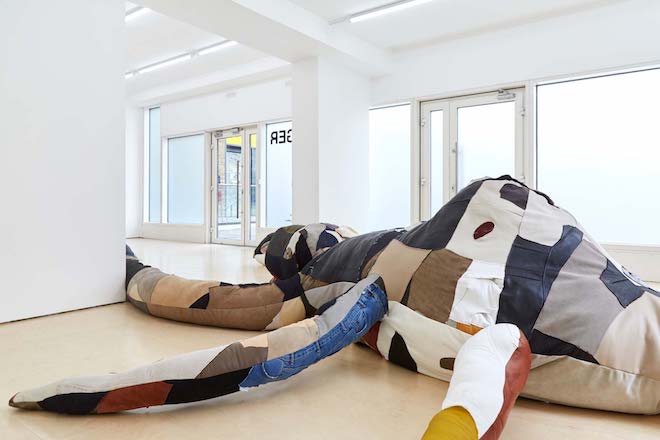
Instead of displaying a body of work, the exhibition uses the body as the work – acknowledging it as something which can be moulded and adjusted continuously. Using a diverse array of textiles to create a patchwork of materials that include recycled leather and jeans, Gray creates a site-specific sculpture, a monstrous creature that is representative of both the sphinx and Scorpion. Stuffed and stitched, the physical act of creating the hybradised beast presents the audience with a work that exists in a paradoxical realm. All at once it is violent and volatile yet gentle and vulnerable – playing with traditional binary stereotypes of male and female. With only a few days left to see Dark Air, Gray spoke with Twin about the show and their grotesque Frankenstinian beast. Gray also speaks openly about their own dysphoria and dissociation with their body as well as the importance of being conscious in order to re-inhabit and bridge the gap between their mind and body to create as harmonious a relationship as possible.
You started to create art as a way of helping you relate to your own body – is this where the tactile element of your practice and its link to your own body manifests from?
In a lot of ways, in regards to my gender identity as well as my art practice itself, I was existing very much in my own head and in an ideological way rather than a physical one, which isn’t necessarily a bad thing but I think became a problem for me as I was coming to terms very starkly with my own dysphoria and dissociation with my own body. This show in particular deals with a rejection of “before” and “after” narratives in a broader sense around myth making and storytelling, but that are so tied to mainstream/cis narratives around transness that can really seep into my consciousness, but is ultimately a dangerous way of thinking when it comes to my own understanding of myself and my life. I don’t particularly identify with the concept of “being in the wrong body” so while my dysphoria is real and distressing in its own way, there’s also a recognition of and gratefulness for the body I have and what its capable of and finding ways to inhabit it more consciously as I discover the ways, big and small, I might have subconsciously unlearned out of self-preservation. The “before” and “after” narrative tells us we aren’t complete yet or we can’t be happy or know ourselves until an outward marker of change or identity has been breached for others, but that obfuscates the work and learning and daily experiences we encounter on the road towards knowing oneself. Everyone in their own way has these experiences with learning or unlearning themselves, recognizing and accepting their bodies and their possibilities or limitations, and making their own meanings and interpretations on their own terms. With this in mind, I moved towards a more physical or tactile practice which has been a way of trying to reinhabit my body in a more conscious and present way on a daily basis (sewing in particular is quite a meditative act). Without sounding too much like Frankenstein, there is a power and a catharsis for me in creating these new ways of embodiment that take up physical space and I can hold in my hands or that literally dwarf me in a room, and I can also use this physical practice as a means of furthering my ideological pursuits and explorations of my identity and the world around me, and in so doing I hope to get closer to bridging my mind and my body in ways that are within my control.
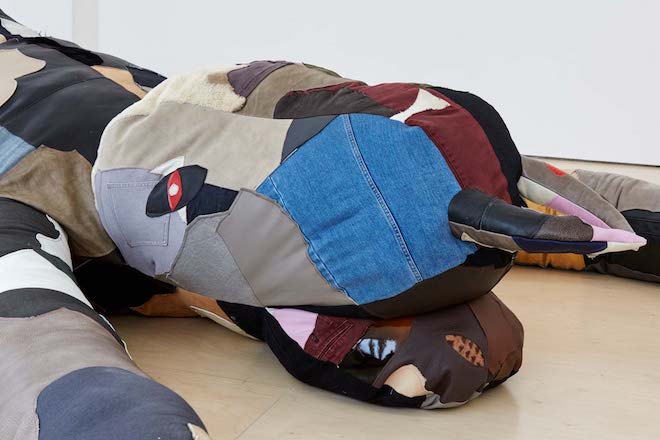
You are influenced by science fiction and the way it allows us to create other worlds and possibilities Can you name some of your influences?
Whether it was books or films or TV, I consumed a lot of media and stories as a kid and still continue to do so, so the list of inspirations is long and muddled together in some ways, but science fiction has always held a special place. Science fiction has long been a means, particularly for marginalized people, to hold up a mirror to see and critique that which is made to feel “natural,” which can then be a very useful tool for survival, communication, community and ultimately questioning and fighting the powers that be by understanding where they came from and how dominant narratives are upheld.
In Kindred, Octavia Butler interrogates the impacts of slavery and white supremacy through a time travel narrative. The Matrix has widely been revisited through the lens of the trans experience and transitioning, particularly as the directors, Lana and Lily Wachowski, came out as trans in recent years. The Twilight Zone is masterful at weaving both the minor and major elements of creating uncanny atmospheres that can go from nudging you slightly off kilter to knock you out for the count. For ‘Dark Air’ specifically I was also thinking about Stanislaw Lem’s Solaris which subverts a more typical trope of space exploration as a colonization narrative, and in fact is ultimately about the astronauts’ inability to cope, physically and emotionally, with an overpowering ocean planet. It’s about our complete inability to understand or fathom the extraterrestrial (and maybe even our own subconscious). Science fiction, at its best, lets us imagine and wonder and be awestruck with possibilities, while still keeping a foot firmly on the ground and, in fact, may help us see reality even clearer.
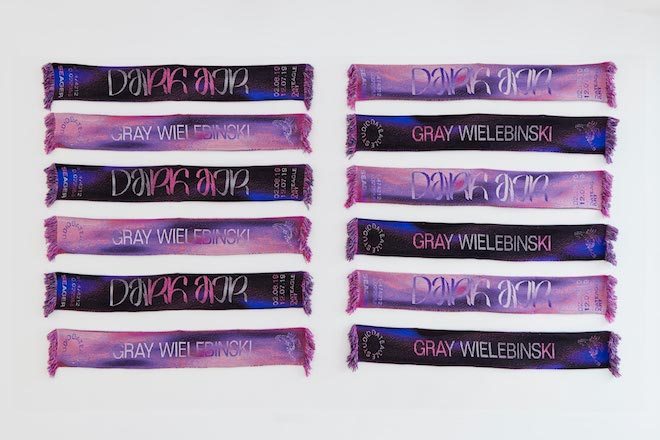
With Dark air you hope to overthrow the notion of the “hero’s journey” and our perceived set paths, goals, and obstacles – is this a comment on the overwhelming conditioning that has been determined through society and the West’s patriarchal system?
I’m fascinated by the idea of the hero’s journey as a storytelling archetype, and I think more so than completely subverting or throwing it out the window, it’s about an even deeper dive into it and not shying away from the minutiae and the mundanity that arguably differentiates a story from a life. The conditioning you’re referencing I think is important especially in relation to our contemporary moment within capitalism and this tension between expectations and conditioning to want certain things for our lives, to take certain paths or understanding success in specific ways, while at the same time being led to believe it’s our decision and that our happiness or opportunities lie squarely within ourselves or within our grasp rather than questioning what is out of our control and what might be possible to question or tweak within ourselves to find our own ideas or barometers of success. Some people are just trying to survive while at the same time we’re being told what we need to be happy or what we are doing wrong or what we need to overcome, and then the goal post keeps moving. It’s a function of capitalism to obfuscate our “true” foes or obstacles and for our path to be fog-covered, so perhaps even subconsciously I proposed of a sphinx that fits in with this atmosphere, or at least how I often feel while trying to navigate it. This all sounds a bit pessimistic but in actuality I hope for it to be empowering in any small way it can, that even in a time where things are made to feel and may very well be out of our immediate hands, there may be ways to internally recalibrate our parameters for success and happiness and fulfilment even on a day to day basis, even if it’s just how we relate to ourselves and each other.
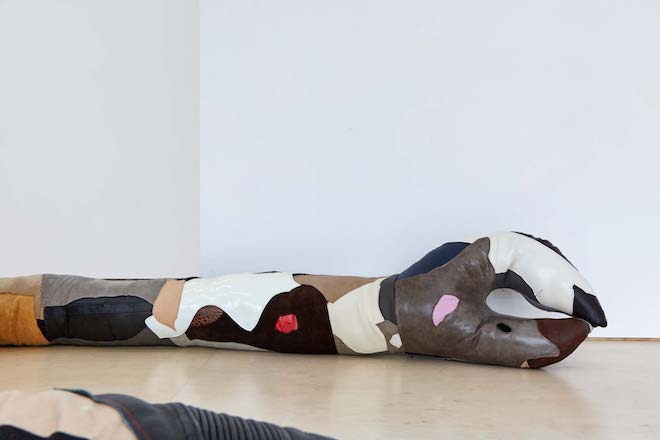
Can you explain the link between your exploration into Mythology and sports and how you connect the two?
I’m interested in blending ancient storytelling and mythological creatures or narratives with contemporary interpretations and iconographies, and in so doing am hoping to bring into question the biases and power dynamics/hierarchies that are often involved in storytelling and myth making both in the past and the present, and how that has the potential to shape our futures.
I also was thinking of intersections of sports, mythology/religion and even being an artist-the relationships between the grand events and the mundanity of the everyday that both, in their own ways, make up these experiences and our relationships to them. Holidays, championship games, art exhibitions certainly hold their own meanings, they can build community and give us something to look forward to and remember, but these go hand in hand with the everyday and the myriad other emotions and experiences built up around these that make up our meaning as well. Personally I am also thinking about gender and transitioning and the relationship between insular and exterior identities and how to shift narratives from a “before” and “after” to a whole other way of being and experiencing and becoming oneself on a daily basis. Rather than being a sort of trick or gimmicky reveal, my use of this iconography and the set-up of the exhibition itself is coming from a place of optimism and empowerment, of wanting to give both myself and the audience the choice to create meaning for ourselves and to question how and when we might be told otherwise.
What else will you be working on this year?
Right now, I’m working towards making new works for a group show at Lychee One in London and a three person show in Odense, Denmark both in September. I am also working on a newly commissioned video and performance piece in collaboration with HRH that I’m really looking forward to. After that I’m going to take some time to reflect on what I’ve made this year and how I want to move forward.
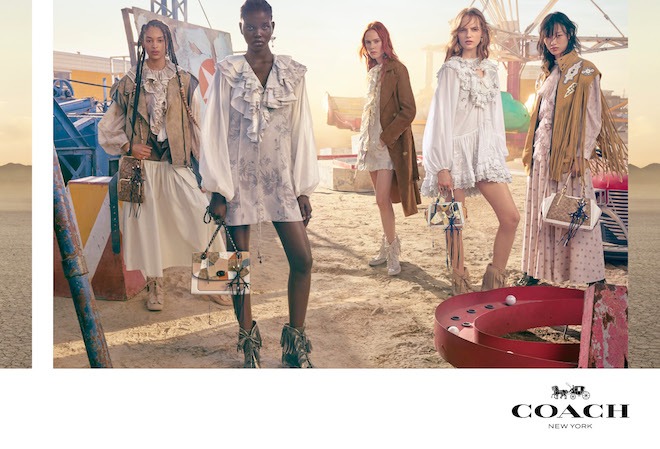
Coach Spring 2019 – A Western Road Trip
To ring in the new year, American luxury accessory house Coach, launches their global campaign for the Spring 2019 collection today. The collection features floral print dresses, ruffled blouses and dresses, and of course some of the brand’s signature bags — the Parker Top Handle and the Patchwork Dreamer. Coach ambassadors Kiki Mizuhara and Guan Xiaotong and models Adut Akech, Fran Summers and Kiki Williams among others were elegantly captured by photographer Craig McDean in a faded carnival scene in Los Angeles inspired by a western American road trip. The campaign also features a few pieces from the brand’s collaboration with Disney which gives a playful twist on some of the network’s iconic characters. The images of this all female gang breathe cool, confident, effortless spirit from the Coach girl which accurately conveys the inclusive and optimistic vision of the house with the collections main themes. To view the full collection , visit Coach.
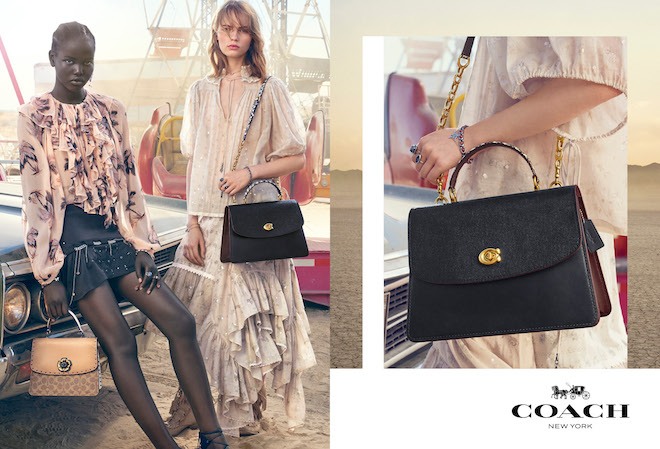
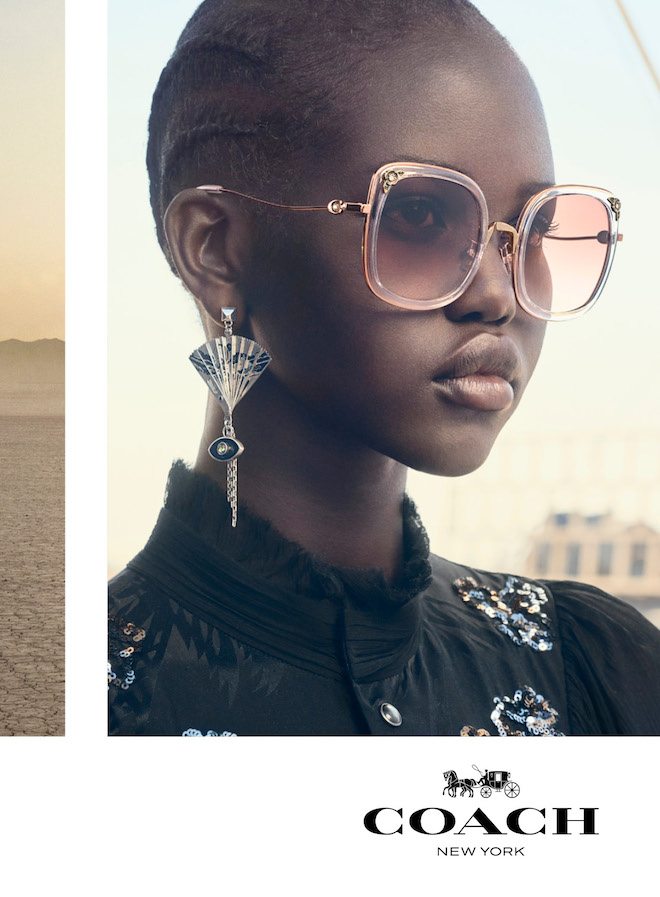
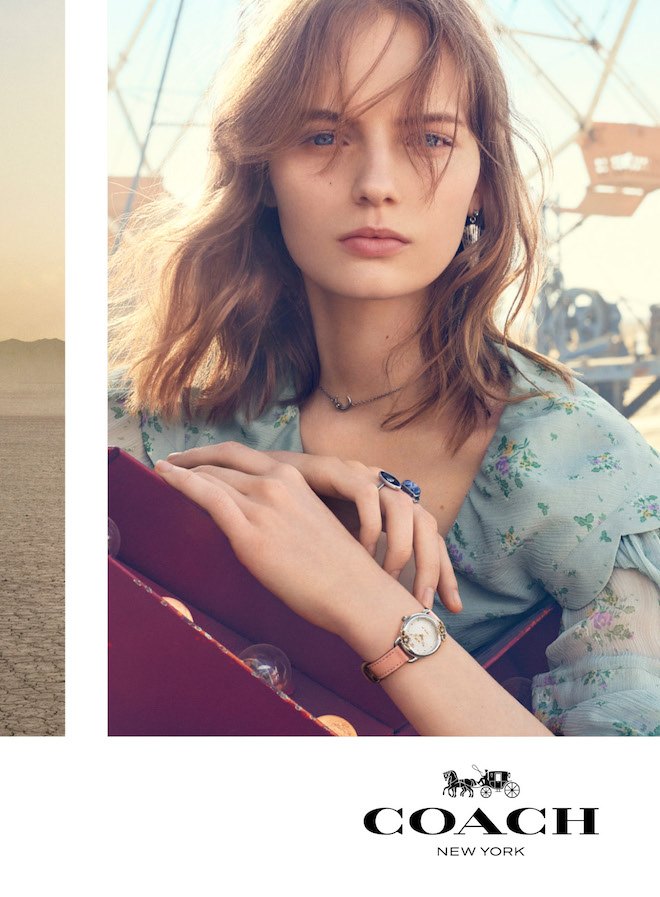
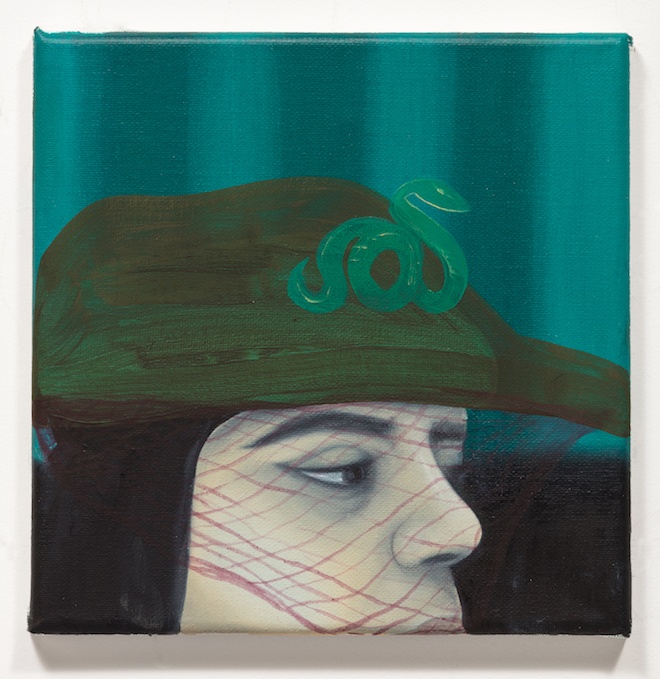
Sadie Coles HQ: Katja Seib, Dear Diary
London based contemporary art gallery Sadie Coles HQ introduces their most recent collaboration with German visual artist Katja Seib in an exhibition entitled Dear Diary at their gallery in Mayfair. This is the artist’s first solo exhibition in London which will feature a collection of new paintings which go by the theme of lucid figuration blurs into dreamlike symbolism, sharing a quality of psychological depth in common to her previous work. On large burlap canvases, Seib depicts characters from real-life models to imaginary personae with materials which permeate both texture and imagery. The artist’s paintings are often marked by reoccurring symbols and themes such as female sexuality and subjectivity and reality shading ambiguously into fantasy. She explores the use of light and colour using fluctuations in shadow and tones to render spatial depth. Also installed upstairs of the gallery will be an exhibition of her smaller works made on square canvases. This collection is mainly based on photographs she has taken of people she encounters during her life in Los Angeles. The exhibition is set to open on November 16th and will conclude on January 05, 2019. Be sure to stop by and have a look.
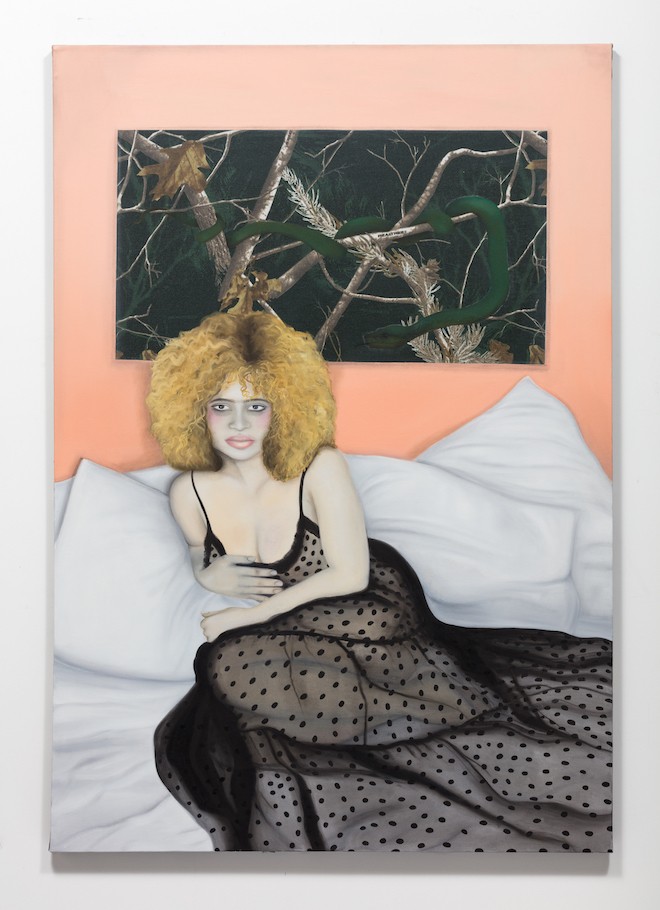
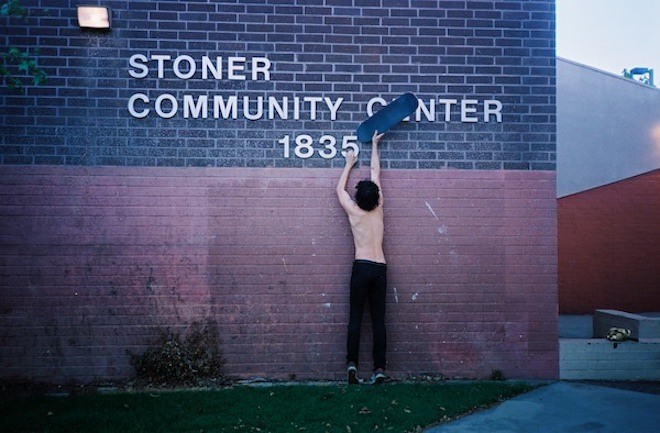
Ami Sioux, From The Road Exhibition
Photographer and musician Ami Sioux debuts her first monograph of personal work in a photography exhibition and book titled From The Road. The book is curated as a collection of portraits, landscapes and abstracts shot during the photographer’s journey in New York, Berlin, Paris, Tokyo and Los Angeles from 2001 through 2018.
Sioux’s path as a photographer initially began in the 1990s which has been a journey which has took her throughout all these cities. She is a photographer who has shot for brands such as Hermes and Maison Margiela, but also prides herself as a photographer who demands a certain type of presence of the subjects of her images. Her work in the exhibition documents and engages a time passage with portraits of lovers and friends alongside landscapes and abstracts captured in a painterly way along with outtakes of celebrities and artists she has shot for magazines throughout the years. The entire series was shot on 35mm film and the cover of book was designed by musician and artist Matt Fishbeck. This will count as Ami’s fourth personal book. The others; Paris 48°N, Reykjavik 64°N and Tokyo 35°N are series exploring the relationships of creatives and their abiding cities. The exhibition will eventually travel to New York, Los Angeles and Tokyo, but is currently running in Paris at the Mannerheim Gallery until November 11, 2018.

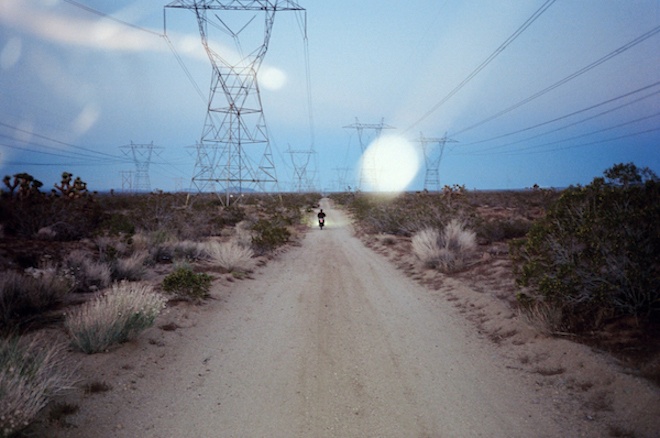
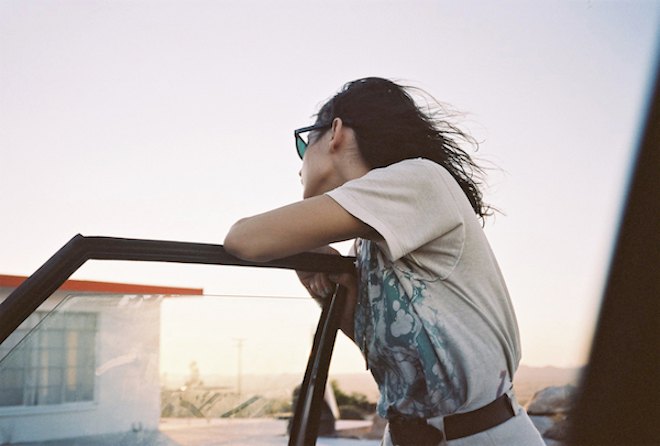
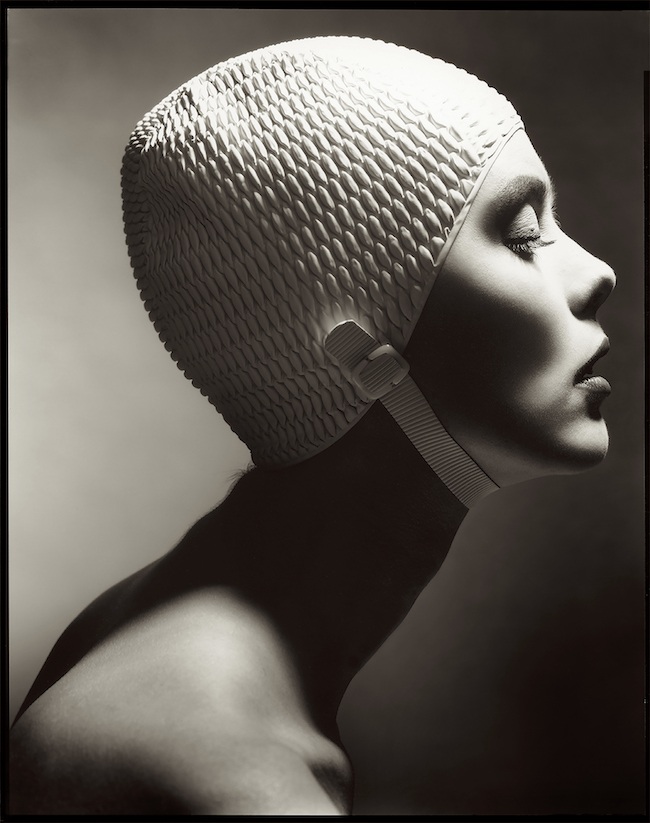
Peter Fetterman: A fascination with the photographic lens
In celebration of the Santa Monica-based photography collector’s new exhibition, The Fashion Show, at his self-titled gallery, Twin parks the spotlight on Peter Fetterman’s dedication to the photographic frame.
What initially sparked your fascination with photography?
I started my career in the film industry dealing with moving images then discovered the power of photography to tell stories through individual images.
How did you become such an ardent collector?
By accident in 1979. I had just arrived in Los Angeles from London. I was invited to a small dinner party and it turned out the host was selling his small collection of photographs that hung in his dining room. I could not stop looking at one image, Max Yavno’s “Premier at Cathay Circle”. I asked how much it was and the owner said it was $400. I had arrived in California with five t-shirts and two pairs of jeans, had a total net worth of $2000 and was driving a beat-up car with virtually no brakes. If I were rational I should have spent the money on new brakes, but I bought my first photo and it changed my life.
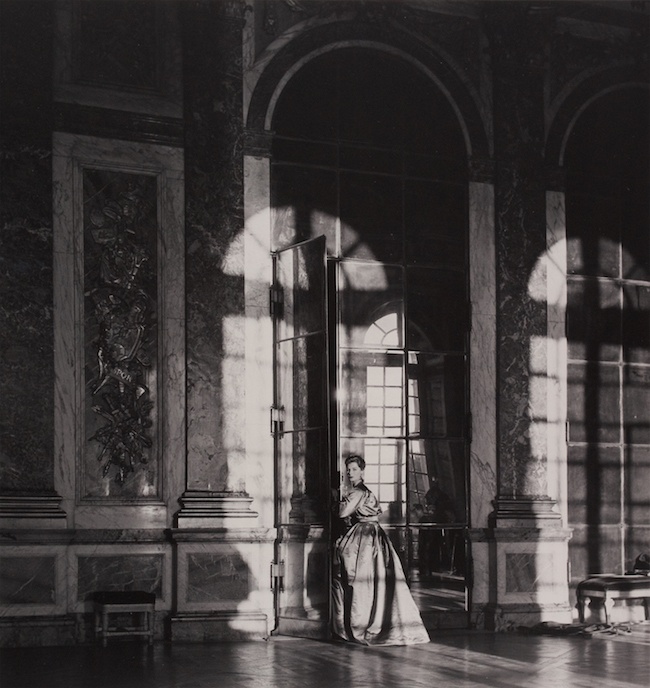
Why did you choose to open your own gallery?
My collecting habit had become so extreme. I was working out of the back of my rent-controlled apartment and making house calls like the Tupperware lady. I was asked to open a gallery in a new arts development centre in Santa Monica. The organiser said to me that he had heard I had a great eye and asked if I would like to open a public gallery. I said why not? I had no idea of what I was doing when I started out. I learnt along the way.
Over the years has there been particular photographers whose vision has stayed with you?
My first and greatest inspiration was the celebrated French photographer Henri Cartier Bresson, and still is. We became his main US gallery for the last 14 years of his life. Henri kindly introduced me to another inspiring photographer, the great Brazilian photographer Sebastiao Salgado, with whom we have collaborated for over 30 years now. His passion fires up my own.
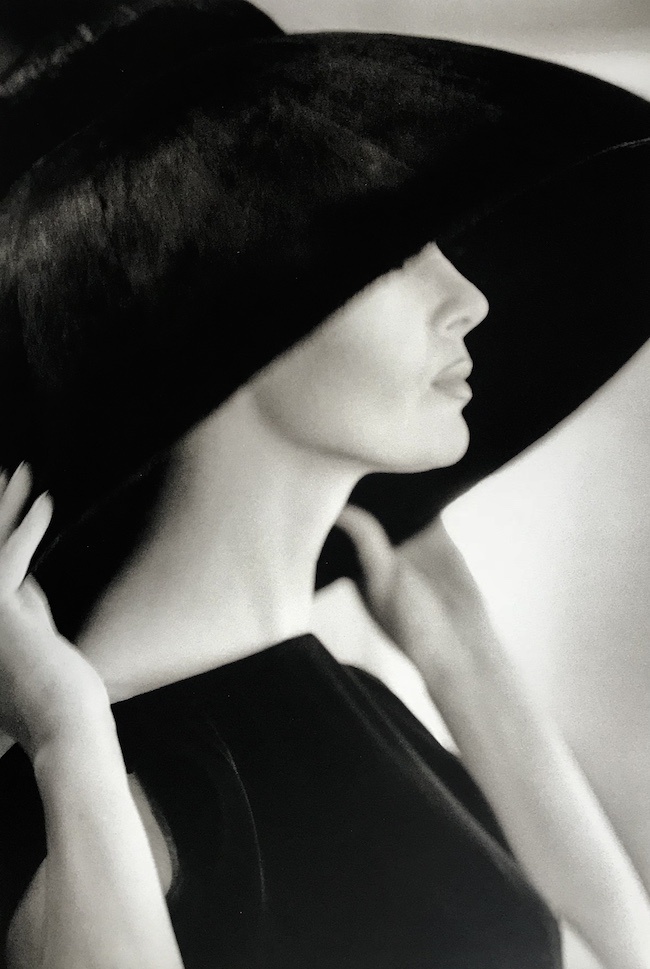
You have a new exhibition entitled ‘The Fashion Show’ – what made you decide on this as a fitting theme for your gallery?
I am always seeking the beauty in life and I have always appreciated the style and elegance to be found in this genre.
A fashion show can be an overwhelming collaborative celebration of creativity: do you think the images in your exhibition showcase this aspect?
I hope the selection in this exhibition does indeed show this collaboration. We have some of the greatest designers ever represented form Yves Saint Laurent, Chanel, Elsa Schiaparelli matched by such great artist like Horst, Norman Parkinson, Hoyningen -Huene, Melvin Sokolsky and many others…
There are some iconic female photographers in the line-up: who are your highlights?
There were so many great female photographers working in the 50’s and 60’s who were overshadowed by the attention heaped upon the members of the fashion boy’s club, chief of whom were Irving Penn and Richard Avedon. But I have always felt that female photographers like Lillian Bassman, Francis McClaughlin Gill, Louise Dahl Wolfe were their equals.
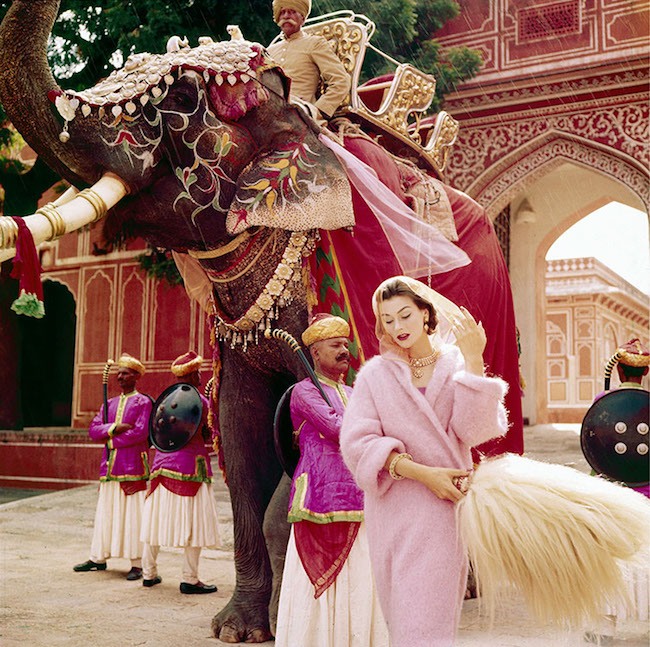
Were the female photographers in the exhibition initially celebrated as equals their male counterparts?
These photographers were overlooked critically, but I strongly believe that history will eventually re-write their achievements
What have you learnt makes a great fashion photograph?
I use the same yardstick I do for what makes a great photograph in any genre of photography. Like a great novel or film or piece of music, you are one person before you see a great image and another person after you see a great image.
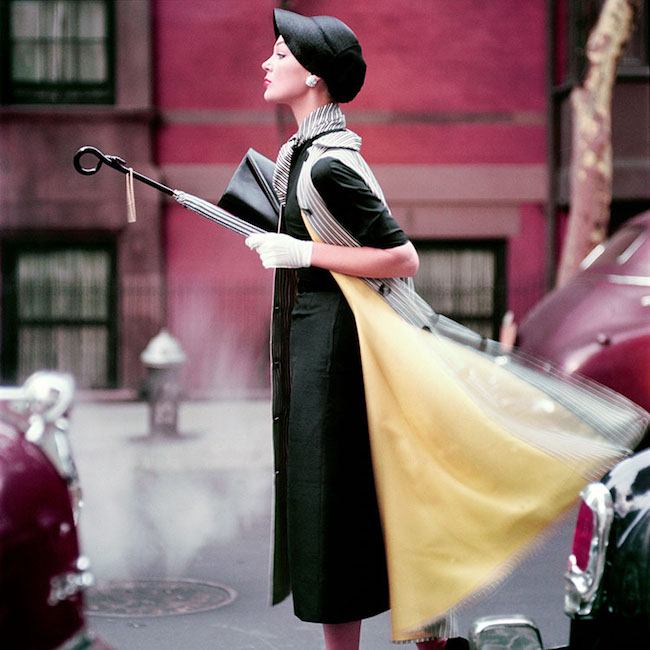
In the age of hyper self-awareness, have we entered a new age of fashion portraiture?
I’m not so sure we have actually entered a new age of fashion photography. I think we have entered a different era because of the proliferation of digital photography. Everyone today can call themselves a photographer because the barriers to entry are so low. Perhaps I’m just old school but my taste keeps leading me back in photo history. Probably one of the first great fashion photographers was Julia Margaret Cameron. What she produced in the 1860’s is still pretty monumental in my book, and has barely been topped since.
What was the last thing that thrilled you?
The last great exhibitions that thrilled and moved me recently was the Irving Penn exhibition at the Grand Palais. In Paris last November and the great Dorothea Lange exhibition at the Barbican this year.
The Fashion Show is on at Peter Fetterman Gallery until 20th October, 2018.
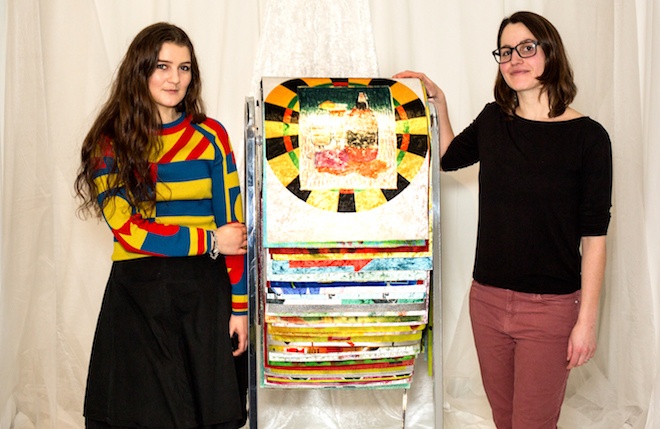
Artistic collaborations from London’s next generation of creatives
Fashion and Fine Art are as intertwined as any two mediums can be, and so on the surface a project that brings together five artist and five designers doesn’t seem so radical. But not every designer is Raf Simons, able to access and afford the works of Sterling Ruby for his Dior collections, or Gianni Versace, making Warhol’s iconic work part of Versace’s iconic image without fear of being sued. A titan of one industry working with a powerhouse of another often produces incredible results, but it rarely exposes anyone to anything new.
The reality is that producing a collection or a piece of work takes time and money, and most emerging designers and artists are short on both. Encountering the work of someone new and having the infrastructure to collaborate is a privilege, and it is a privilege that the BFC Fashion Arts Foundations aim to extend to more makers. Now in its second year, the FAF’s Fashion arts Commissions scheme sees the British Fashion Council and the Royal Academy Schools pair NEWGEN designers with recent graduates of the RA Schools. Each pair is given a budget and mentoring, and a year to produce work to be exhibited and sold at Christie’s.
As you might imagine some pairs clicked immediately, finding a symbiosis between their practice that made them easy and natural collaborators – Liam Hodges and Nicky Carvell got on so well that they used part of their funding to take a research trip to LA together. For others the clash of influence, interest and expectation might have made the creative process a little more torturous, but this kind of friction is sometimes needed to provoke new ideas and ways of working. Eliza Bonham Carter, Head of the Royal Academy Schools, puts it best: ‘The value of this process lies not only in these bold, surprising and intriguing works of art, but also in the process by which they are achieved, which will inform the practice of each participant long into the future’.
In an era where arts funding is on its knees, and the government continues to cull art from school curriculums, it’s heartening to see organisations like the Fashion Arts Foundation are still around. All proceeds from the sale at Christie’s will go back in to the Foundation, to continue funding future cycles of collaboration. Unsurprisingly the final works are as strong and diverse as the participants. Encountering each other’s different mediums, approaches and frames of reference has produced a show that is a testament to the aims of the project – there is something new here. Across the hall from the more stiff traditional pieces that are the bread and butter of a house like Christie’s, the viewer suddenly encounters is a looming metal parasol, ominously askew and slick with fabric; distorted metal sculptures that feel like collages in motion; a carpet swatch rolodex of endlessly pleasing textures printed over with sinister undertones; a room of balance and tension shadowed by projection, and a series of playful, Zeuss-like structures that are as elegant as they are unusual.
Hear about each pair’s pleasingly divergent inspiration below:
LIAM HODGES & NICKY CARVELL
The ideas behind our work – industrialism, decay and rejuvenation sparked instantly on our first meeting. A shared search / destroy / rebuild attitude meant the work had to be uncompromisingly tough yet hopeful. A road trip to Los Angeles and to salvaged sites ‘Slab City’ and ‘Salvation Mountain’ were essential to instigate our shared visions. Process wise, Liam immediately wanted to set everything on fire. The nearest we came to this was welding scrap metal with sheet steel. The end results are robust sculptures made with the American ‘can do’ attitude brought to life in an East End warehouse.
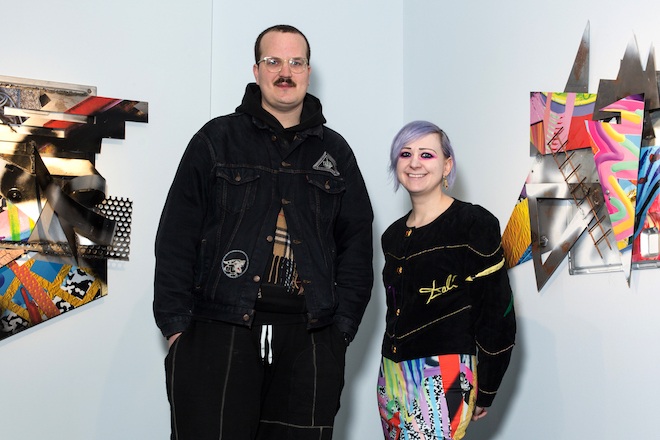
PAULA KNORR & APPAU JNR BOAKYE-YIADOM
We wanted to create a work that could exist in different iterations. Using materials that illustrated this, from the fabric that takes on different characteristics when hung, looking through, gathered on the floor or folded over. The parasol frame both electric and manually operated changing its size and orientation depending on the space in which its shown. The video illustrating a ball falling from the top of the frame to the bottom, looped in transit, accompanied with dubbed audio of a drum in an echo chamber of sound. Focusing on different forms of sculptural movement from both culture, fashion, video and sound.
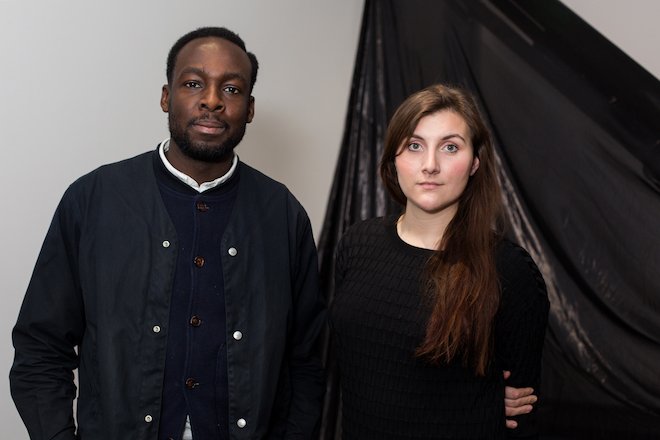
RICHARD MALONE & MARCO PALMIERI
A garment, as a term, is ambiguous; it can serve a limited but clear purpose, or on other occasions can shed its functional vestiges and slip into the realms of surrealism, play and sensuality. Our bodies share an intimate relationship with these fabrics and textiles, from the clothes we wear, to the furnishings that decorate our houses. At the same time this relationship is fragile and fleeting; fashion dictates a constant change in taste. Our hope with this collaboration was to create something tactile and ephemeral, like the clothes we inhabit for the recital of our daily routines – delicate skins we shed with seasonal regularity. From gentle poses of the hand that are sketched out on sheets of paper and lines of laser-cut aluminium, to oversized figures/mannequins robed in intricately patterned fabric, the pieces present themselves in a theatrical, surrealist spirit.
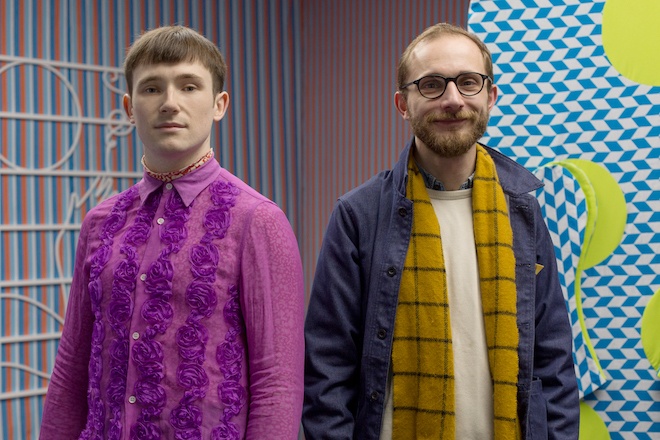
SADIE WILLIAMS & CARLA BUSUTTIL
In highlighting the politics of algorithmic era information commodification, we use Google Adwords as material for exploring consumer hierarchies. Our “Google Adword Library” contains some of the most expensive words on auction: Mesothelioma. Lawyer. Blackjack. Cord Blood. Spread Betting. We re-channelled these words through the search engine, collaging image results on textiles through painting, bonding and printing. The installation includes a ‘tombola’ showroom display. The metallic structure stands as a confident, analogue representation of an abstract digital marketplace for words. The tombola also references ‘old school’ methods of enticing consumers – contrasted here with modern visual and digital methods of production.
SAMUEL ROSS OF A-COLD-WALL* & JULIE BORN SCHWARTZ
The starting point of the project was an exploration into the different layers that appear in Samuel’s designs. Working with the film media we wanted to play with the possibilities of light and transparency, like a collage of the different layers and structures of the clothes itself. The process was an ongoing back and forth inspiration: the musical score was made after some of the editing of the film, and the last film edit was made from the music’s compositions.
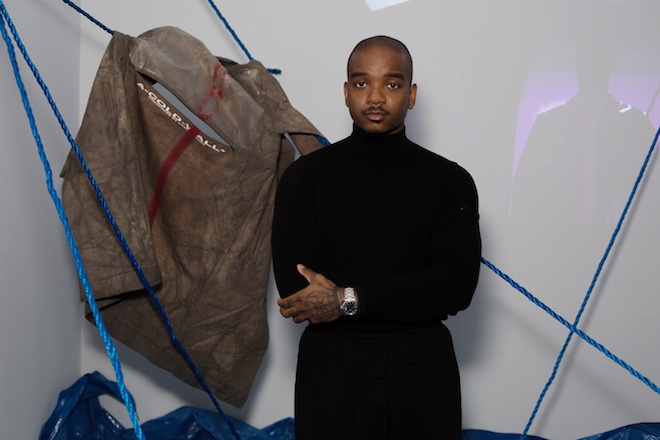
For sales enquiries contact the British Fashion Council.
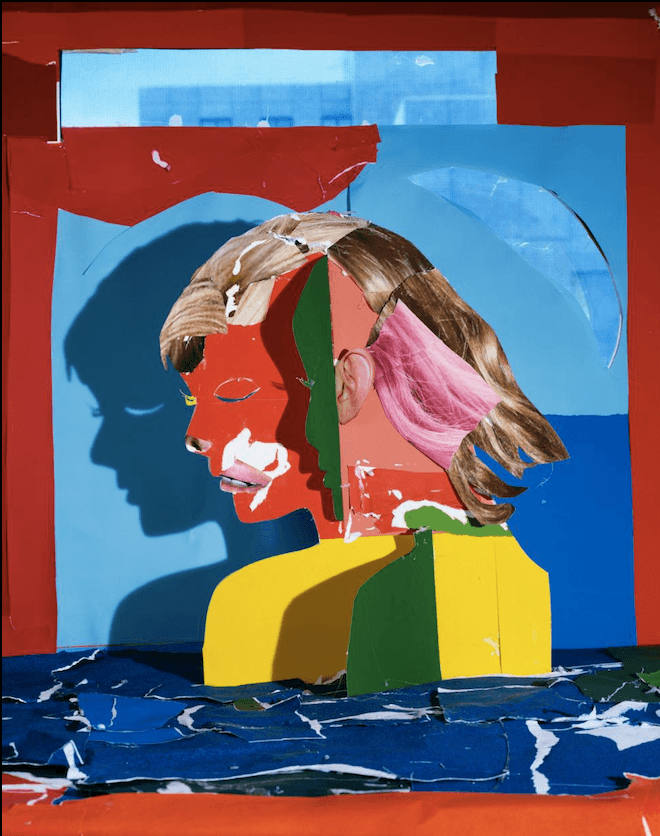
Getty Museum Presents Cut! Paper Play in Contemporary Photography
From Friday 27th February, until the 27th May, the J. Paul Getty Museum at LA’s Getty Centre will play host to works by six contemporary artists, who have each expanded the role of paper in photography.
For some, a photograph is simply an image on a piece of paper, but for other photographers, paper is not merely the end result of developing a photograph – it is a material that can be animated in a number of ways. Timothy Potts, director of the J. Paul Getty Museum, describes how “a number of works blur the line between photography and other mediums”; manipulating the printed photograph by cutting, shaping and combining images takes photography in radically new directions.
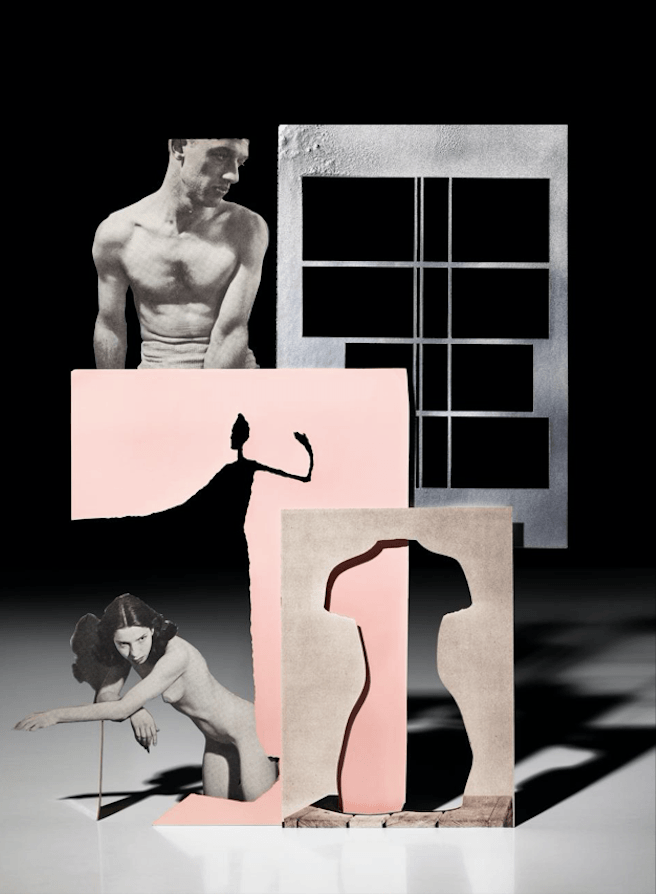
Models, 2016 |Promised Gift of Sharyn and Bruce Charnas © Matt Lipps / Getty
Many pieces have been borrowed from Los Angeles-based collectors, institutions, or galleries, and others have been taken from the Getty Museum’s permanent collection. The exhibition provides a context and historical perspective on the experimentation of many contemporary photographers today.
Works spanning the years 1926 to 1967, by Manual Alvarez Bravo, Alexander Rodchenko, and Ei-Q, all feature cut-paper abstractions and figures modeled from paper that have been photographed. These pieces have provided a basis for more daring contemporary experimentation; artists Daniel Gordon, Matt Lipps, and Thomas Demand create paper models and images taken from current events, the internet, or books and magazines. Others, such as Soo Kim, cut and layer photographs, introducing three-dimensional elements into what is traditionally a two-dimensional art form. Clementines, 2011 | © Daniel Gordon / Courtesy Daniel Gordon and M+B Gallery, Los Angeles
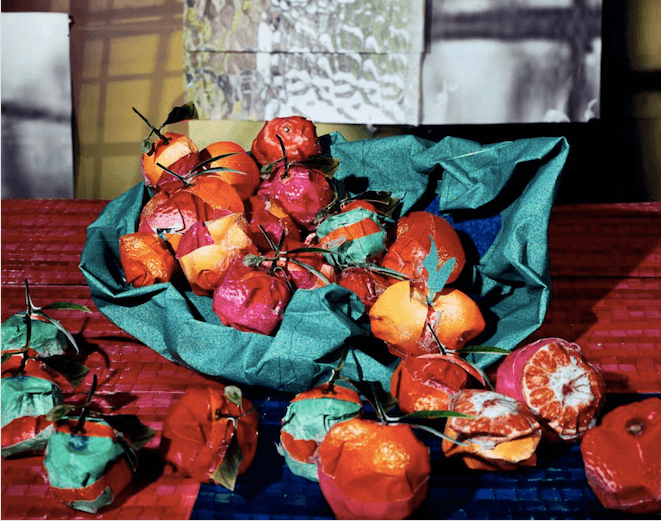
The exhibition has been curated by Virginia Heckert, head of the Getty Museum’s Department of Photographs, and the works can be viewed from the end of February.
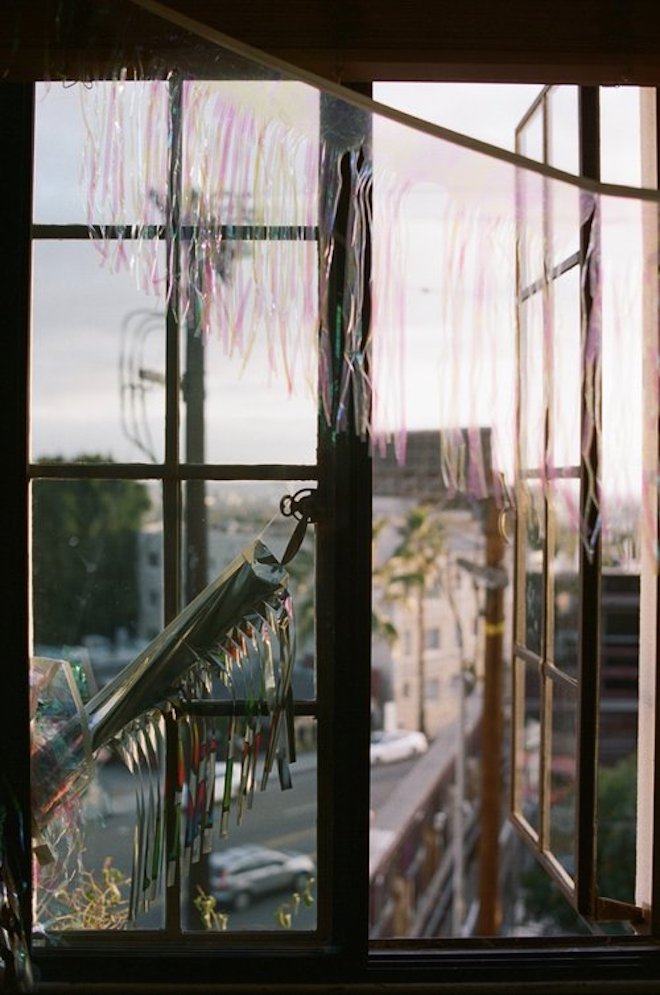
Images that shaped a vision, with Emma Tillman
Emma Tillman’s photographs chronicle the unseen moments in life, those, to steal from Virginia Woolf, islands of meaning which shore up against the ferocious momentum of time. It’s fitting that her book Disco Ball Soul, was named such: thoughtful, investigative and lingering, her portraits of friendships, romance and the natural world offer an energising and playful mosaic of her experience of the world. Here, she tells Twin about the images which have most impacted and shaped her life and work.
Alberto García-Alix
Alberto García-Alix is a Spanish photographer from León whose work was part of a movement that shaped modern documentary photography, but to me he is so much more. And that is where I will begin with this list. I would say in a word, he is shameless. And it is this shamelessness that draws circles around the core of ugliness and strangeness, illuminating it until it is light, despite all its rugged detail.
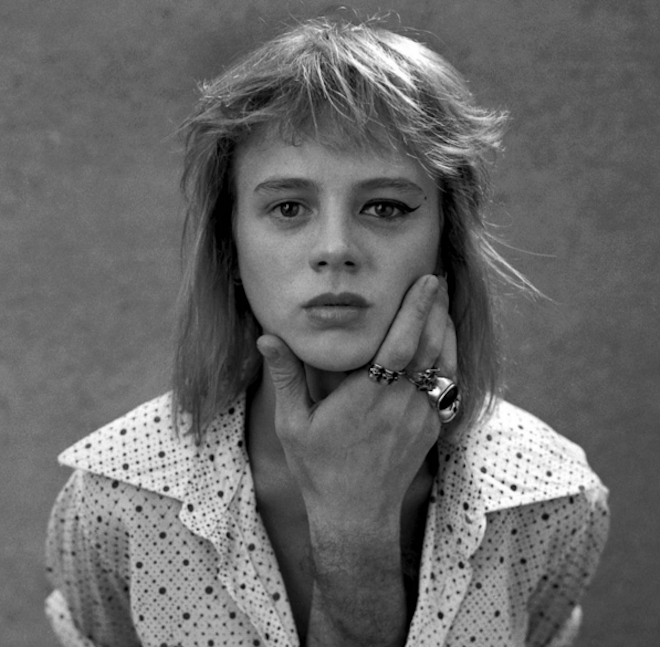
Emma Suarez | © Alberto García-Alix
Taryn Simon
Taryn Simon is an American artist from New York City. Although I had come in contact with her widely regarded and well collected photography a handful of times in my adult life, I had not been touched by its power until one lonely afternoon at the Tate Modern in London. I wandered into a room full of her work from “An American Index of the Hidden and Unfamiliar” and finally understood.
That rainy day I explored the gap she so eloquently elaborated on. Between the brilliant precision of her semiotic examination of secrets and the divine poetry with which she captures them. Simon raises very potent questions, with elegance and beauty.
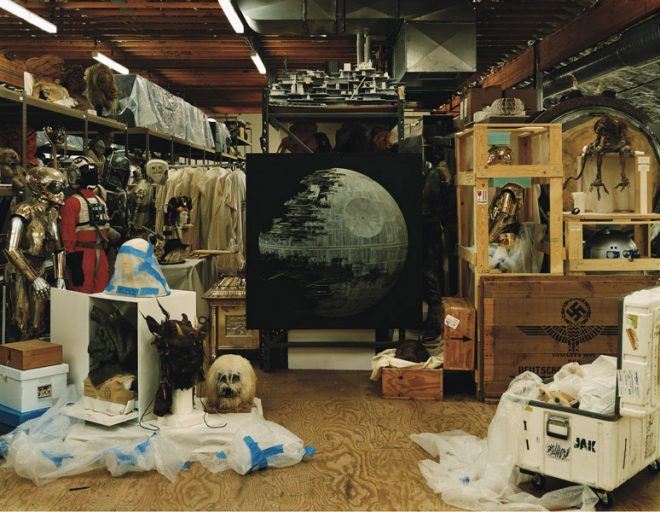
Lucas film archives, props and set pieces. Skywalker Ranch, Marin County, California | © Taryn Simon
Manuel Álvarez Bravo
Manuel Álvarez Bravo was a Mexican photographer from Mexico City and is considered one of the preeminent art photographers in Mexican history. His interest in elevating the quotidian at a time when photography, especially in his home country was staged and highly formal, attracted me from an early age.
In addition to his pioneering reach in exploring the everyday, Bravo sees texture as something deep and mysterious, almost sacred. These observations have haunted me from the time I was a little girl, looking through one of his books in the vast living room of a family friend.
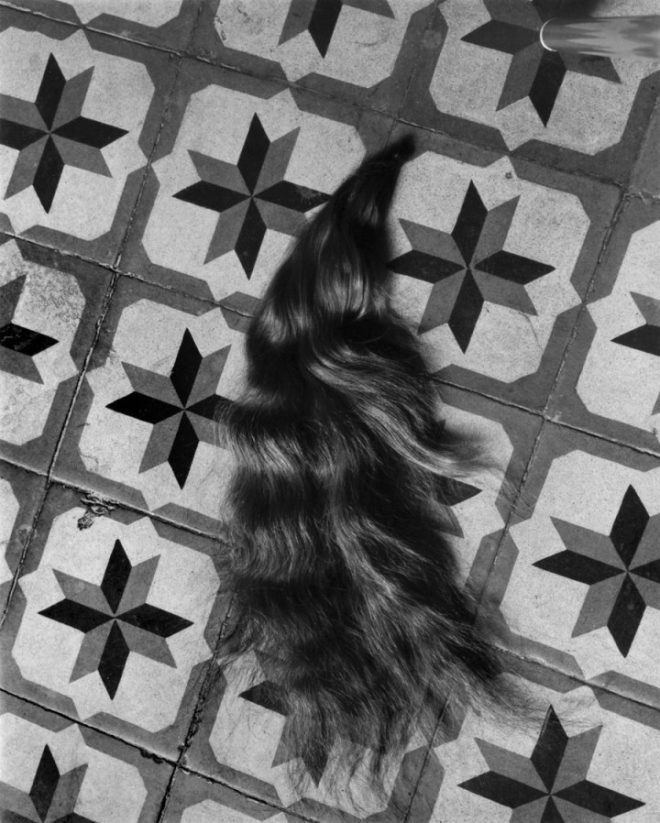
Graciela Iturbine
Graciela Iturbine is a Mexican photographer from Mexico City, and protogée of another photographer mentioned here among my favourites, Manuel Álvarez Bravo. She turned to photography after the death of her six year old daughter and when I look at her images, they all seem to have the lingering sadness and mystery of death, even when the works are capturing subjects which are vividly alive. Otherworldly would be a better word, but overused, don’t you think?
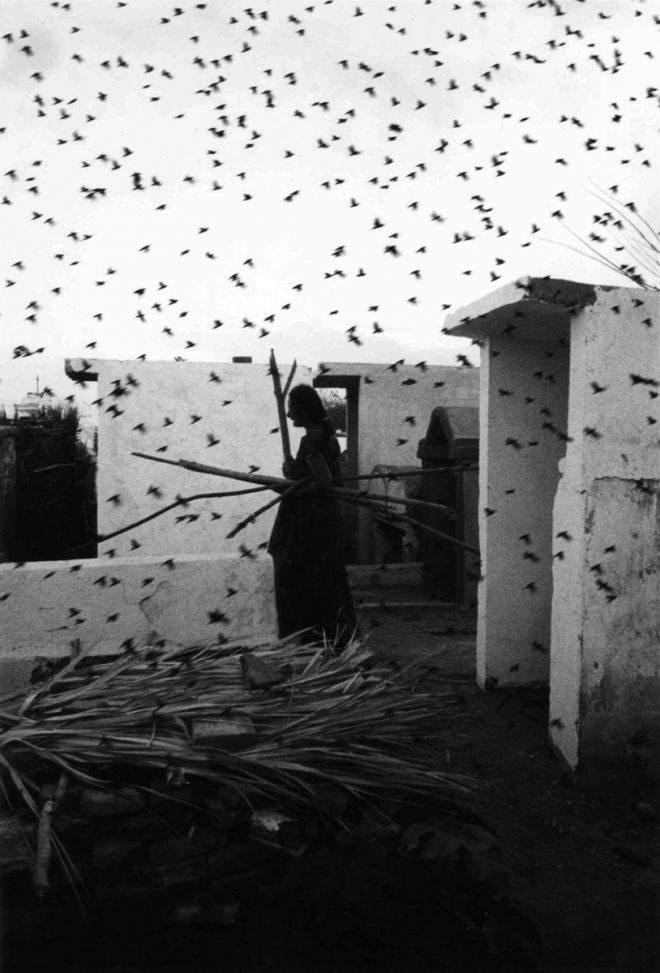
Graciela Iturbine, Cemetery Juchita 1988
Ruth Orkin
Ruth Orkin was an American photographer from Los Angeles who was largely self-taught. She had a ground-breaking career as a freelance photojournalist during a time when the field was, of course largely dominated by men. But it was my contact with her famous photograph, “An American Girl in Italy” (1951) which includes her in this list. When I was twelve or thirteen, I was given a postcard which featured the photograph on the front.
I became obsessed with the story it told. There was an incredible amount of complex information contained inside. Historically, the photograph is somewhat controversial, and seems to be a Rorschach test for personal ideas about feminism. I for one, knew exactly what it meant; independence, freedom and self-determination. For that reason, I can’t say the photographer directly influenced my work as much as my way of life.
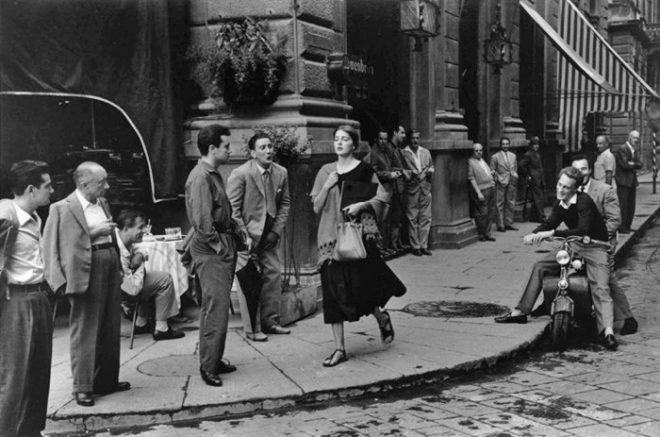
An American Girl in Italy, 1951 | © Ruth Orkin
Helmut Newton
One night, many years ago now, I was at the Chateau Marmont waiting for someone who never came. The bartender, feeling bad for me, very graciously stayed past last call and regaled me with ghost stories from the hotel. One of them was the story of Helmut Newton’s death; a car crash in which he drove headlong into the formidable white wall guarding the hotel’s entrance. Until then, I had always heard his name but never quite put the pieces together, you might say. But his tragic demise piqued my interest and when I discovered his world, I was enchanted. Everything he photographed had a perverse sexiness. It was dark, physical, and expressed a glamorous power that I saw mirrored in my own interests.
I think about him now every time I pass that white wall, and say a little prayer for all who flirt with the dark side.
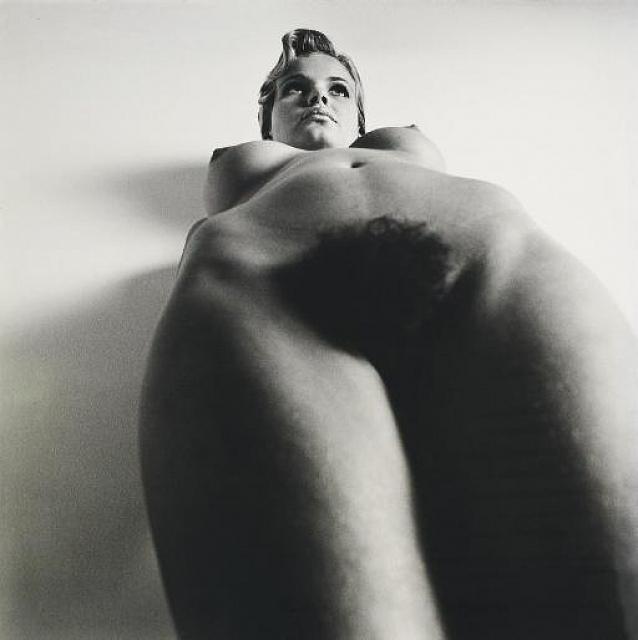
La Hollandaise, Monte Carlo, 1994 | © Helmut Newton
Henri Cartier-Bresson
Henri Cartier-Bresson was a French photographer from Paris. The king of composition! The king of the candid! And man, what a life well lived. In 1952 he published his book, “The Decisive Moment” about his philosophical approach to photography (with cover illustrations by Henri Matisse, I might add). In it, he contends “To me, photography is the simultaneous recognition, in a fraction of a second, of the significance of an event as well as of a precise organisation of forms which give that event its proper expression.” And I couldn’t agree more.
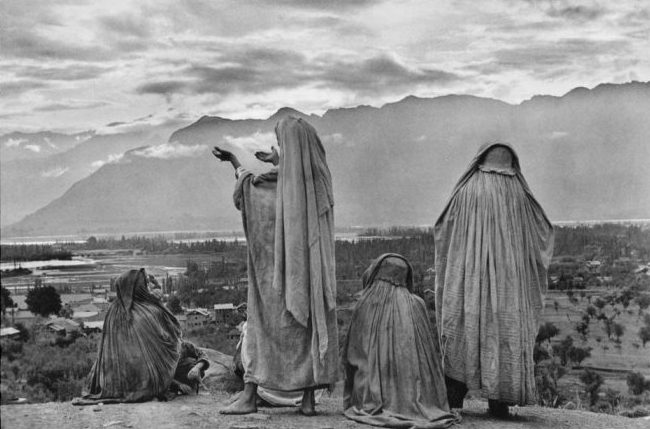
Srinagar, Kashmir, Muslim women on the slopes of Hari Parbal Hill, praying toward the sun rising behind the Himalayas, 1948 | © Henri Cartier- Bresson
Sally Mann
Sally Mann is an American photographer from Lexington, Virginia who stirred incredible controversy in the 1990s for photographs of her children, mostly in the nude on the Virginia farm where Mann still lives with her family. I think the images are incredibly beautiful, touching, and unflinching. I love a little controversy if the source is worthy, and to me, these photographs have most definitely been an inspiring and worthy source for years.
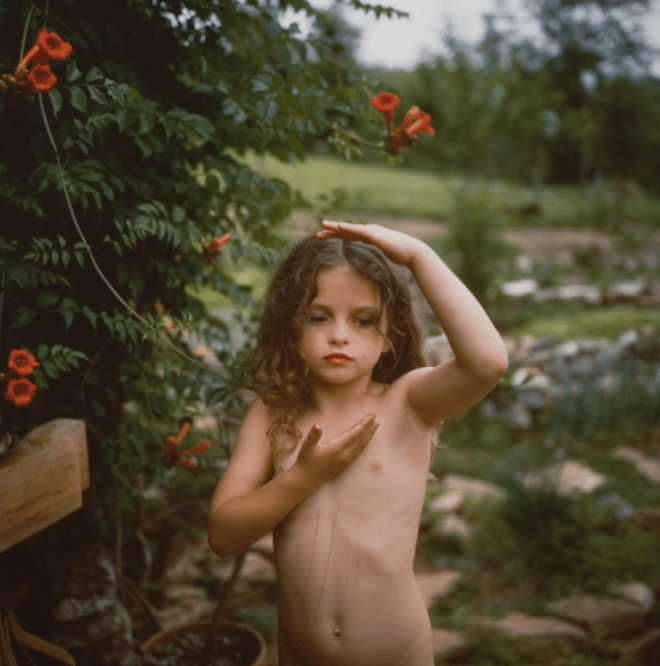
Untitled (Virginia with Trumpet Vine), 1990
Featured image by Emma Tillman.
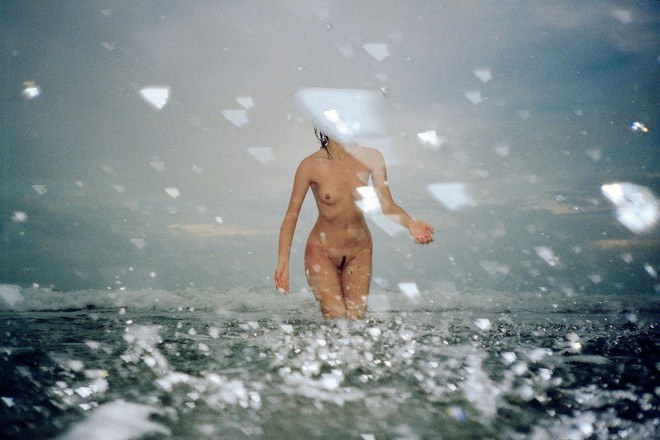
Future Feminine
A new exhibition at the Fahey/Klein Gallery in Los Angeles brings the evolution of the female gaze to the forefront of the narrative. Aligning an international rostra of women artists, the exhibition celebrates a new era of photography in which the body is examined rather than objectified; observed rather than owned.
Exhibitors include Amanda Charchian, Remy Holwick, creative duo Honey Long & Prue Stent, and Magdalena Wosinska, who together offer an exciting harbinger of the future feminine narrative in photography.
Images span the mystic and mythic to snapshots of the mundane, with Charchian drawing inspiration from psychologist J.A. Lee’s interpretation of Greek philosophy, Prue Stent and Honey Long focussing on powerful juxtapositions of material and colour and Wosinska offering raw, intimate portraits.
The future looks bright, the future is female.
Future Feminine is at Fahey / Klein Gallery from January 18 – February 24, 2018.
Featured image credit: Amanda Charchian.
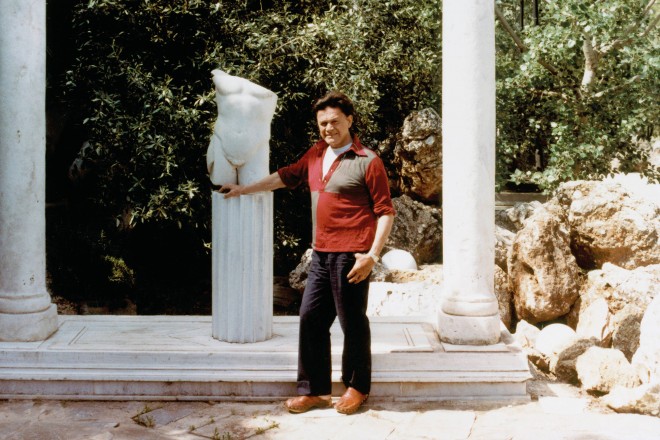
Fall into Ruin: William E. Jones at The Modern Institute
William E Jones, one of Los Angeles’ foremost independent film makers, once wrote of his work: “I am making my own explosions, in another context.” He was referring to the veneration of big budget Hollywood films to include explosions; Jones has created films which focus on visual stimulation rather than coherent narratives. Jones’ wide ranging body of work, such as feature length films Finished (1997) and Is It Really So Strange? (2004), have dealt with issues of sexuality, deception and artistic and social façades. Jones’ latest project Fall Into Ruin promises a return to these themes as it makes its debut at The Modern Institute, Glasgow.
In Fall Into Ruin, Jones converges with an equally impressionable and multifaceted character, that of Alexander Iolas, the eminent Greek art dealer. The film documents the artist’s return to the property of Iolas, situated in an Athenian suburb. The art dealer became well known for his affiliation with surrealists such as Max Ernst and his championing of late Picasso works. He remains a figure of mystery within the art world; indeed, his own age was never discovered due to the continual changes he made to his date of birth on his passport. Fall Into Ruin is an investigation into the life of the Iolas through a visual catalogue of the now uninhabited remnants of his homely estate. Once described as a showroom rather than a private residence, the film contrasts the current state of the building; vandalised, defaced by graffiti and looted of its contents – including his esteemed art collection. This makes an interesting comparison to Iolas himself, whom was said to mix with both the top sectors of society for business and the very bottom sectors of society for pleasure. Set among the warm, dusty Athenian landscape, the film explores the intersection of two opposing sides of the art market and marks a new fold in Jones’ ever flourishing career.
The running time of Fall into Ruin is exactly 30 minutes. Screenings will begin every half hour between 10 am – 6 pm (Monday – Friday) and 12 pm – 5 pm (Saturday) at The Modern Institute, Glasgow
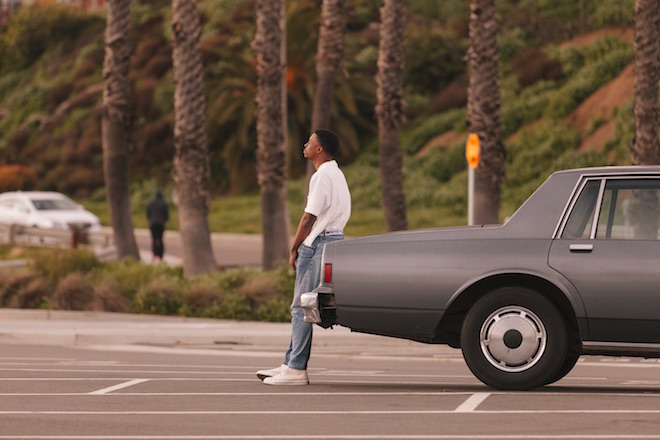
Forever Chuck: The Icons of L.A.
A three-part series ‘Chuck Forever’ explores the core cultural scenes that have made Chuck Taylors so iconic. In the latest instalment we are transported to LA, where Long Beach recording artist and style icon Vince Staples guides viewers through Chuck Taylor’s influence on street style and hip hop music in urban Los Angeles.
The video, directed by award-winning filmmaker Karim Huu Do, taps into Los Angeles’ youth culture; it shows how music and fashion combine to build enduring subcultures. During the film, viewers are also introduced to Los Angeles Lakers star Jordan Clarkson, and Born and Raised founder Spanto, who each explain their relationship with Chucks, and talk us through the way they choose to dress.
Julien Cahn, the Chief Marketing Officer at Converse, explains how, “Los Angeles has played an important role in revolutionising youth culture far beyond the west coast. Chuck Taylor has been part of all of that. He’s a symbol for underdogs, rebels and individualists all around the world.”
The newly launched series focuses on the daring, confident spirit of youth culture and celebrates the impact of Chucks on diverse cultural scenes all over the world. In the first instalment, Stranger Things star Mille Bobbie Brown introduced us to the use of Chucks in film, asking what kinds of characters wear them, and why?
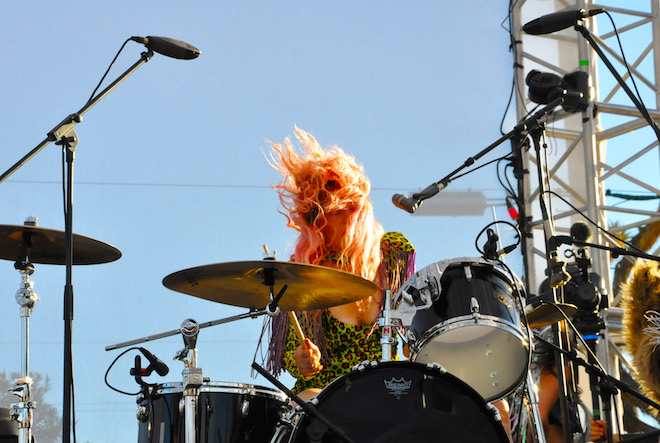
Desert Daze – Joshua Tree, California – October 2016
A sun-drenched gathering in the form of a pysch-rock festival took place in the high desert landscape of Joshua Tree, California last month. Set in accordance with the October full moon, several thousand visitors congregated to celebrate music and art in the unique setting of The Institute of Mentalphysics – a mediation retreat set up in 1941 in Yucca Valley by Edwin John Dingle, known as Ding Le Mei to his many followers. The organisers behind Desert Daze are husband and wife team Phil Perrone and Julie Edwards of Moonblock – an artist driven production company based in Los Angeles – both of whom perform with their bands at the festival. We spoke a little about their DIY vision for Desert Daze.
Can you tell us about the history of Desert Daze, how did it start? Who are the team behind it?
Desert Daze started in 2012 because a roadhouse asked us to throw three parties during the double weekend of Coachella. We decided to throw 11 parties. The team are my closest family and friends – my wife, my friends, former bandmates, current bandmates, etc. We’re a family restaurant basically.
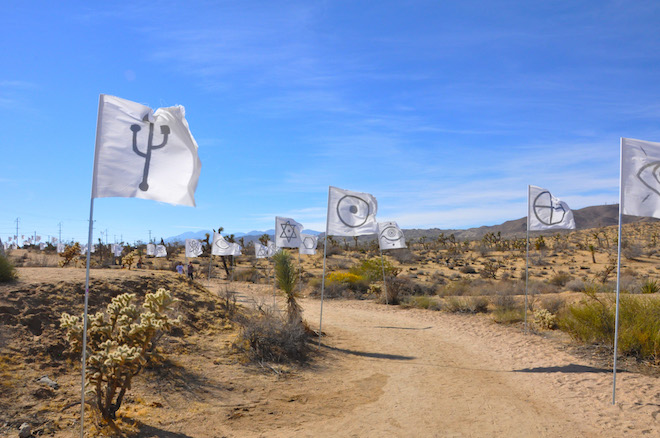
How have things progressed since the beginning? What are the major changes?
With each year, more and more people contribute and collaborate with it. We started with 13 people doing every job there is on a festival production – now there are 208. We used to use duct tape, now we use gaff.
How many revellers came to party at the first Desert Daze and how many have just joined you for 2016? Do you feel the numbers have changed things or has the general vibe stayed the same?
I think we had about 1,000 a day on that first one. Hard to say how many came out to 2016. It’s several thousand more, but still a very comfortable amount for the space – and that’s the point. I think the vibe is pretty much where it needs to be. Probably a bit more exciting than it used to be, but still relaxed enough to feel like you belong there.
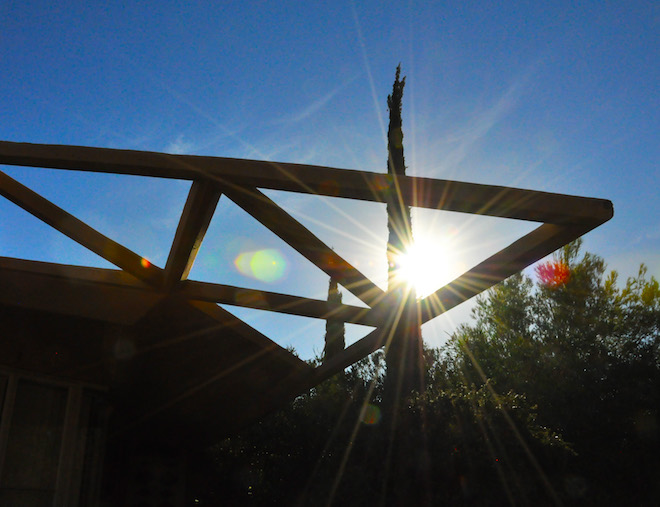
Where have you held the previous festivals? Is Desert Daze nomadic or is the Institute of Mentalphysics the new annual home for you guys?
Desert Daze started in Desert Hot Springs, then Mecca, and now Joshua Tree. We’d love to make the Institute of Mentalphysics our permanent home. In a perfect world, we could lay down roots in Joshua Tree for the proper Desert Daze event and follow our nomadic spirit with a traveling version of the festival and other satellite events. We still need to do something in the Mojave.
Phil your band JjuuJjuu played the Saturday night whilst Julie, your band Deap Vally played an awesome gig on the Sunday afternoon, it looked like you guys were really having fun up there – it must feel pretty good to host and perform. Do you feel as musicians that you have a greater understanding of running the event? In terms of having a stronger empathy with the performers needs and the audience alike.
Being a touring musician definitely gives you a perspective on organizing an event and providing hospitality for both the artist and the fans. We hope to create an environment where both are super happy and comfortable. It’s conducive to having a good time.
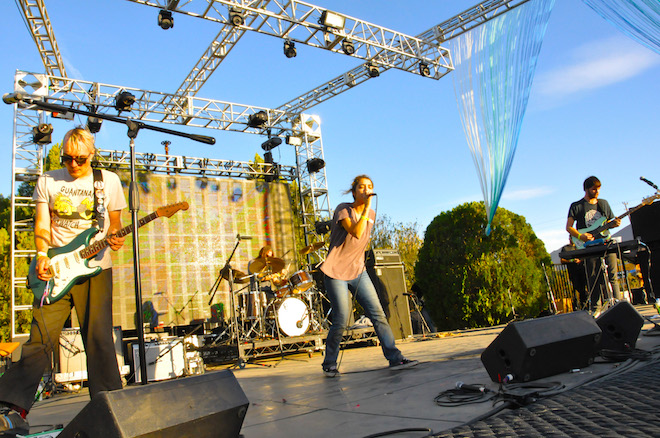
Jenny Lee performs
You could tell us a little about how Desert Daze has grown from the psych-rock scene in California, if you feel that is the case or your background in it. Desert Daze definitely appeared to have a specific audience from one strong scene who were very much enjoying the weekend.
I think Desert Daze speaks to true music lovers. People who buy tickets early. Get in line early. Buy merch. Buy vinyl. People that LOVE live music. Live music is my religion, my philosophy, and I think Desert Daze is for people like that. We don’t just like psych or rock or world or ambient or weird or alternative or experimental music – we like all of that and more. If it’s honest, if it’s good, it has a place at Desert Daze.
The Institute of Mentalphysics is a meditation retreat set up in 1941, a maze of pathways and quiet gardens punctuated with modernist structures built using sacred geometry by architect Frank Lloyd Wright – quite a place to have a festival – Lloyd Wright believed in designing structures that were in harmony with their environment, is this something you feel Desert Daze promotes in it’s essence? Harmony in music, in art and in it’s environment.
Yes, it certainly does. Everything about this venue has really set the tone that we’ve always wanted Desert Daze to have. It’s the exact right place for this festival. It provides a space where the dreams we have for this festival can come true. There was an alchemic situation that happened with all of us getting together on that site under the full moon. Love was in the air. People got engaged. People got married. People made babies. It all happened. It was like we were all experiencing the same dream. And the site had a lot to do with it. The music had a lot to do with it. And the people had a lot to do with it. The chemistry of all factors involved made for an amazing reality that we all experienced as one. There was a real singular energetic thing going on. I hate to sound hippie dippy, but it felt scientific at the time and still does.
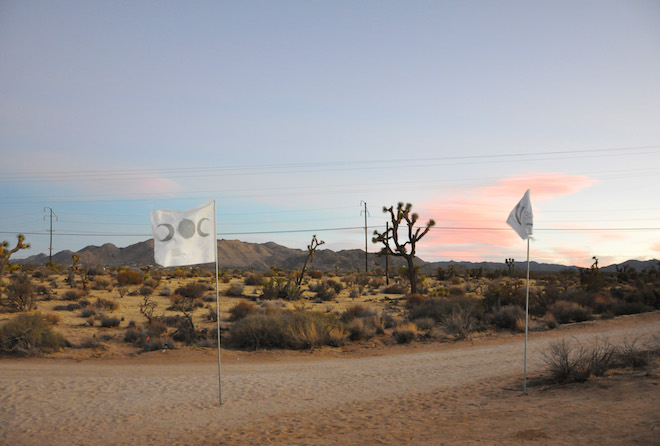
We’re interested in the future of the music festival, it seems as with many things today people are keen to return to an older model of best practice, a return to a simpler existence perhaps – is this something you discuss? Early models of music festivals.
I don’t know what early music festivals were like, exactly. But, I do know that we wanted ours to feel different and it does. We’ve achieved what we’ve been striving for, now we have to figure out how to simultaneously expand and maintain it at the same time. When I say expand, I don’t necessarily mean with capacity, I just mean in scope as far as art, installations, environs, and experience goes. I think we’ve only scratched the surface of what’s possible with the community of visual and installation artists we’ve magnetically connected to over the years. I look forward to building new and amazing things with these people. But, at the same time, I want to make sure we maintain the wild and free energy of it all. That’s the delicate balance we will now try to master as we move forward.
Can you talk us through some of the art installations around the site, did you have an overall vision for them? Who created them?
The art installations around the property are the result of many many hours of coordinating on the part of Mason Rothschild, our fearless art director. He assembled an amazing coterie of installations artists from around the country. Celeste Byers and Aaron Glasson built two installations – the transporter and the infinagon. Brad Hansen designed a life sized neon Desert Daze sign as well as an infinite neon mirror. Mieka Ginsburg and Prescott McCarthy built a beautiful vertical hanging shade design for the Block Stage, as well as a beautiful billowing white fabric shade for the audience at that stage and these amazing monolithic pillars with flowing white flags. They also brought a stellar pagoda. The team at Non Plus Ultra built the Cave of Far Gone Dreams where you could play bones and Duck Hunt. There was more. A lot more.
What were your personal highlights for 2016?
Having my 10 month old daughter there for the whole thing. Seeing Television play Marquee Moon under a full moon. Seeing everyone transform including myself. It was unreal. Surreal. Life changing for so many. Everything we wanted it to be and can’t wait to do it again next year.
What is your vision for Desert Daze 2017?
To continue the dream.
Main shot: Deap Vally perform
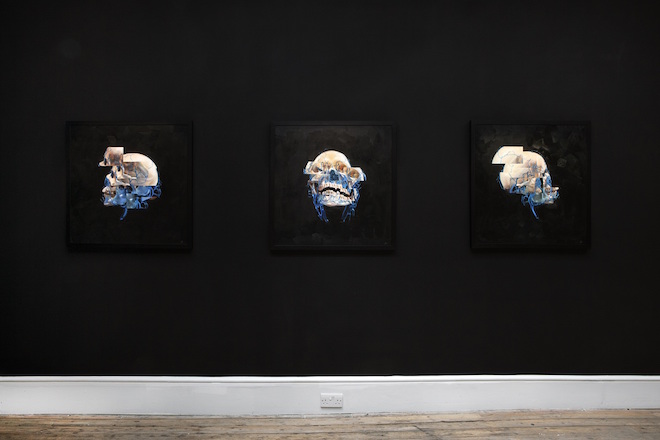
Golgo’s first London exhibition · FLESH · BLOOD · SUBSTANCE ·
· FLESH · BLOOD · SUBSTANCE · is the debut London exhibition from Mexican artist Golgo. Running now and until the 12th November 2016, Andreas Hijar aka Golgo shows his own personal interpretation of life and death through a series of canvases focused on the combination of anatomy and symbolism. This is a common theme seen through his work, as his interest centres around the human body, its functioning and its decay.
“· FLESH · BLOOD · SUBSTANCE · is the autopsy of my spirit, a reinterpretation of science and soul, an exploration of our concrete presence and inevitable disintegration. This group of work is the fragmentation of my personal approach towards the reasons behind the malady of ageing, changing and existing as substance. Oils, red and blues took the place of scalpels; with them I glanced into the viscera of the corporal and the essence behind the fluidity of extinguishing vitality. Here lies what I feel and perceive as the vacuum of ever changing life and intrinsic end.” – Golgo
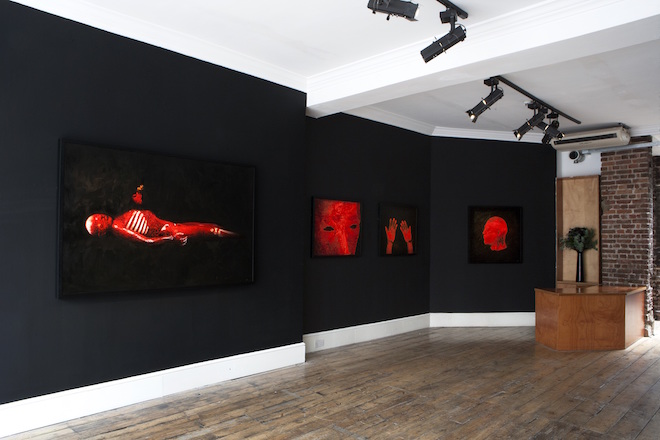
Golgo also continues to produce as an individual creator at his Black Blood Studio, allegedly founded in Mexico City in 1666 and now located in Los Angeles. Golgo employs a wide range of techniques including oil, ink and aerosols. His pictures exploit the popular imagery associated with medieval Europe, playing with the notions of spirituality, corporeality and pain. They also expose the futility of any attempts to draw a line between art and science, as they demonstrate that these areas of knowledge complement rather than conflict each other.
The exhibition runs till 12th November 2016 at Lazarides:11 Rathbone Place, London, W1T 1HR.
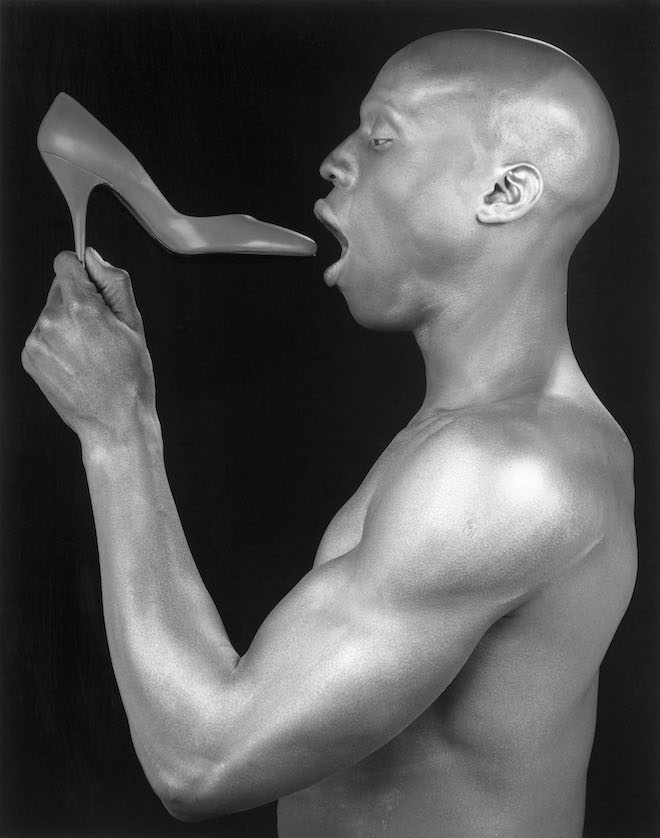
Juergen Teller to curate Mapplethorpe retrospective
In honour of what would have been Robert Mapplethorpe‘s 70th birthday, Juergen Teller will be curating a retrospective of the iconoclast’s vast and provocative body of work – ‘Teller On Mapplethorpe’ – at London’s Alison Jacques Gallery.
No photographer since Robert Mapplethorpe has so seamlessly blurred the lines between commercial fashion photography and art as Juergen Teller, and both artists are famed for twisting and manipulating conventional understandings of photography as an art form. The gallery is said to have granted Teller free access to Mapplethorpe’s entire archive of both published and unpublished work, circumstances that facilitate a deep and rich reading of the rebel artist’s work. Without a doubt, to view Mapplethorpe’s photographic oeuvre through Juergen Teller’s visionary lens promises to be a unique and rarefied experience.
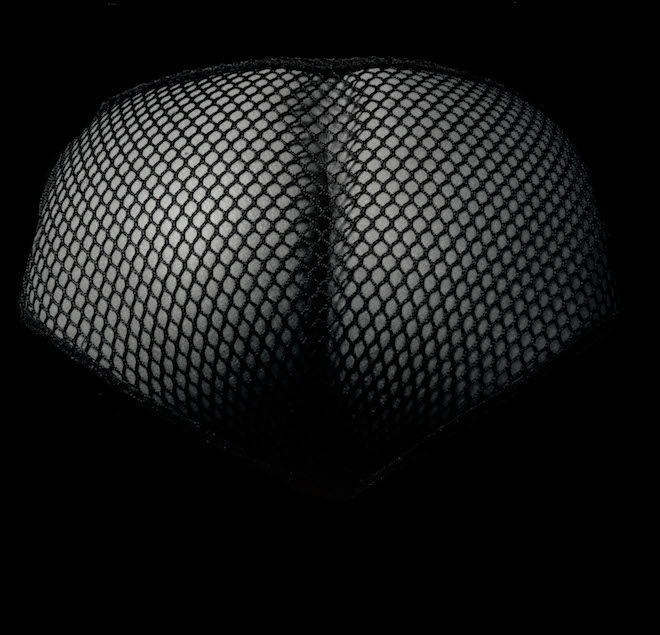
Milton Moore, 1981
Mapplethorpe sought an unrealistic perfection of form in everything he photographed, from acts of sexual fetishism to the delicate shapes and contours of flowers. His classical and formalist approach to scandalous and highly explicit subject matter elevated photography to the level of painting and broke down the barriers between pornography and art.
Alison Jacques, who has represented the Estate of Robert Mapplethorpe in Britain for seventeen years, said: “Provocative and subversive, making images which are the antithesis of conventional fashion photography and, most importantly, a key artist of his time, Juergen Teller was the only choice to curate this special exhibition of Robert’s work. There are obvious parallels between these artists and I am excited to see how Juergen will bring his edge, energy and unique vision to a new reading of Robert’s work.”
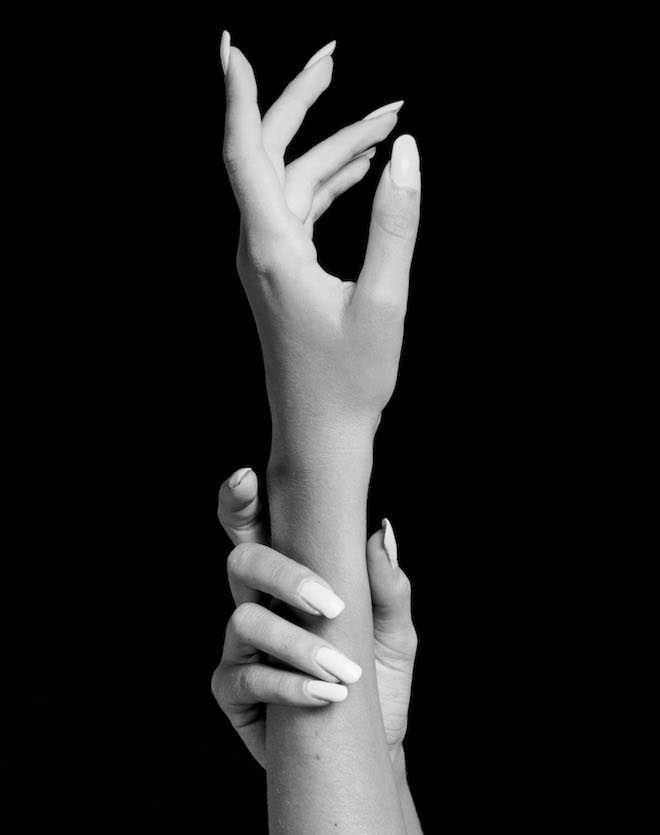
Jennifer Jakobson, 1981
This will be the gallery’s first exhibition of Mapplethorpe’s works since the dual retrospective ‘Robert Mapplethorpe: The Perfect Medium’ at The J. Paul Getty Museum and Los Angeles County Museum of Art (LACMA), Los Angeles (2016), and follows on from the recent release of the HBO documentary film Mapplethorpe: Look at the Pictures (2016).
‘Teller On Mapplethorpe’ will be held at the Alison Jacques Gallery from 18th November – 7th January.
Main image: Ken Moody, 1985
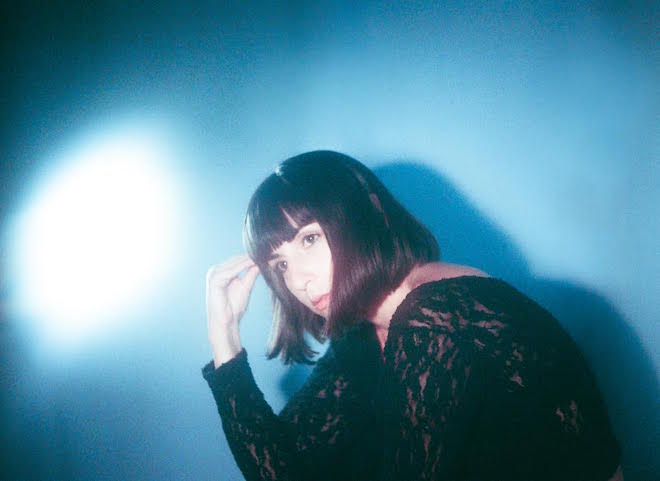
Nite Jewel Unearthed
LA-based musician, Ramona Gonzalez, otherwise known as Nite Jewel, is quite literally going it alone with her latest album: ‘Liquid Cool’. Since making her way onto the music scene in 2008, creating songs with her husband using a portable eight-track cassette recorder, Gonzalez has caught the attention and imagination of many, including director Noah Baumbach who selected her track ‘Suburbia’ to appear in his film Greenberg.
Now, as she embarks on the road to play her brand new material in Europe, Twin caught up with the much-hyped electro artist to discover how solitude can be one of the best things to ever happen to someone.
You have said that you recorded much, if not all, of your latest album ‘Liquid Cool’ in various closets. How? Why?
Well, it just so turned out that the two places I ended up living in in Los Angeles over the course of recording ‘Liquid Cool’ had these large walk-in closets. I wanted the sound of the record to be very intimate, so I decided to set up shop in these spaces with just a few instruments, in order have privacy and go deep into that fantasy world I was creating.
Was there a specific event that lead you into leaving your previous label? And how did you feel, both creatively and personally, to go solo?
No specific event, but just a general feeling of a poor fit over the course of our relationship. It’s a big commitment to get into a relationship with a label, not only a financial partnership, but a creative partnership as well. If you aren’t feeling like the whole is greater than the sum of it’s parts, then it’s probably best to get out while you can. There’s nothing worse than giving away 50% of your rights/ownership/and profits to an entity you can’t get behind.
I’ve been releasing my music independently since 2008. ‘One second of love’ was the only release done with a label other than my own. The main thing Secretly Canadian [record label] and I agreed upon was perhaps I did a better job at releasing my music on my own independently. So it felt great to get that kind of reassurance. And generally it’s been a better experience doing it on my own, albeit more of a personal expense.
There is an oft-mentioned sensuality to your music, is this deliberate? If so, how do you achieve it?
Definitely not deliberate but perhaps just the way that I sing, coupled with the prominence of the bass and rhythm section.
How has your style and sound progressed over the past ten years? What do you want to say now, in comparison to what you wanted to say then?
It’s progressed immensely and honed itself, but always been very much Nite Jewel. I think I’ve always toyed with similar themes throughout my career. The cross-section of love and technology has always interested me from the very beginning, and continues to be a theme in my work.
Your sound has also been described as “dreamlike” – what was the last thing you dreamt of?
I have very vivid dreams, but the last one I can remember being woken up by, was one where I was doing some sort of very dangerous aerial gymnastics à la Cirque d’Soleil. I’m afraid of heights but have consistent dreams of daredevil type mid-air acrobatics.
‘Liquid Cool’ is said to look a lot at the idea of being alone, is this something you are, or previously have been, afraid of? Have your perceptions of being on your own changed over the years?
I think aloneness is something I have always cherished, but at times it has been something I’ve grappled with being an artist. Aloneness is always directly linked to productivity/creativity. If that isn’t going well one day, aloneness can seem daunting, but most of the time it is a great thing. For ‘Liquid Cool’ I was more exploring the pervasive feeling of aloneness in a world where we are also so virtually interconnected. The internet can prove claustrophobic and crowded, but in reality we are experiencing that alone. That somewhat paradoxical dichotomy was what drove the concept of the album.
This album has been described as a “stripping back the pieces of our own lives until we can really see one another again” – is there anything in particular that you feel is particularly obstructive when it comes to communicating with those around you?
Yes, our online lives/personas.
You’ve done almost everything on this album yourself, how does the feeling of seeing it finished and out there now compare with previous work?
It’s refreshing! But also familiar. I have always done everything on my own, so it’s nothing new. Even when I have worked with other people, in the end, it’s my work, my voice.
Who else, musically, is inspiring you right now? Is there anyone you’d like to collaborate with?
For new stuff: The Internet, Kaitlyn Aurelia Smith, Harriet Brown and Jessy Lanza.
What is the rest of the year looking like? What are you up to next?
Our UK and European tour starts on the 15th September. Come see us!
For a full list of Nite Jewel’s upcoming tour dates, click HERE.

Citizens of Humanity x Mytheresa
This month, an exciting collaboration between premium denim line Citizens of Humanity and luxury retailer mytheresa.com will become available online. The six-piece collection will launch exclusively on the respective websites and is comprised of limited edition denim outerwear and bottoms.
Heavily inspired by the ’80s and early ’90s heavy metal scene, the designs have drawn a lot of influence from cult band Metallica, introducing subtle details in the designs which hint at the ’90s grunge era. The women’s capsule collection goes against the grain, keeping in mind Metallica’s uniform of denim jackets and distressed jeans. To showcase the line and capture its heavy metal influence, Metallica drummer and founding member Lars Ulrich shot the collection, choosing his wife Jessica Miller to model it.
The collection was designed by the Citizens of Humanity Founder Jerome Dahan and Women’s Creative Director Catherine Ryu. Working in collaboration with mytheresa.com, each piece has been produced in Los Angeles, using Citizens of Humanity’s in-house laundry and manufacturing facilities to produce items unparalleled in quality and fit.
Three new outerwear silhouettes have been introduced in the collection, including the Classic Jacket, an oversized boyfriend fit in a light blue wash, a slimmer fit denim jacket in a vintage blue wash called the Trucker Jacket, and the Trucker Vest, a sleeveless washed black denim vest. Three new trouser styles will also become available, these include a high-rise skinny jean in washed black, a mid-rise straight leg jean in a vintage blue wash, and a mid-rise straight fit in washed black.
Head to citizensofhumanity.com or mytheresa.com to browse the pieces for yourselves, which are now available online.
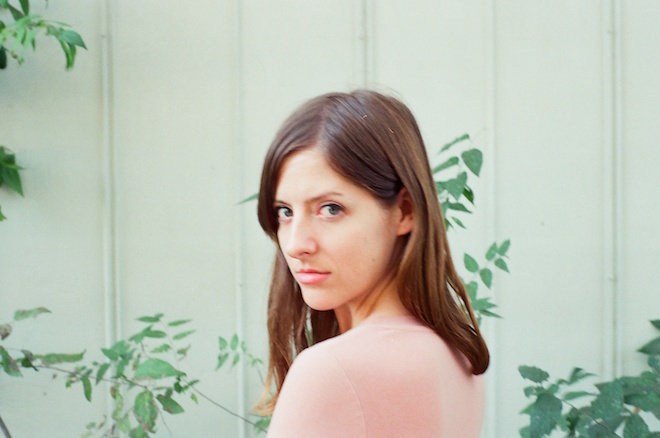
Molly Burch sings the blues
With a voice like pooling honey, and lyrics dripping with longing, Molly Burch is something very rare: a genuine talent. Tonight, she plays London as part of her extensive European tour, showcasing raw and heartbreaking material from her debut album, Please Be Mine.
Having been described as both “re-inventing rock and roll for 2017”, and “exquisite”, Twin caught up with the musician to find out how she makes a smokey, jazz sound so rooted in the past, feel so modern.
You’re about to make your London debut with a show here, have you visited before?
I have, yes! But just on vacation a couple of times. I’ve never played in London before. I’m very excited.
What kind of experience will you be bringing to the UK audiences?
I’ll be traveling with my guitarist Dailey Toliver and our set will be more stripped down than usual. We’ll be bringing an intimate, romantic set.
Do you have a favourite type of venue and city to perform in?
I am really looking forward to this tour in particular because of how intimate it is. I really love playing in listening rooms where the audience is attentive. That always feels so special. As far as cities, I loved playing in my home state Los Angeles on this past tour and I loved our Brooklyn show.
Your music is undeniably nostalgic in its tone, what is it about the greats that you love so much?
I grew up listening to older music. I was raised in a house that put a lot of emphasis on classic movies, both of my parents are in the movie business. We would watch a lot of movies growing up, lots of silent films and musicals. I started listening to jazz music in middle school. I think I was drawn to voices mostly. I was just starting to sing and I felt drawn to voices that I wanted to sound like. That just happened to be female artists with deep voices. When I grew up I went to college for Jazz Vocal Performance. When I started writing songs I was very much influenced by what I learned in school and what I grew up listening to.
How do you think your take on it translates to a modern audience without being ‘retro’ or a novelty?
I would hope that my music comes out as relatable and universal. I write what comes natural to me.
Your love for the likes of Patsy Cline and Nina Simone is clear to see, and can be felt with authenticity. But who inspires you among your contemporaries?
I am very inspired by Solange, Natalie Prass, Tim Darcy, and I just discovered Aldous Harding – I love her new album.
How key is the element of storytelling to what you do?
I think storytelling is important to any songwriter. I find that it is most key when I am performing live.
Are your songs written from personal experience, or to be more universally relatable?
They are a combination of both. I was going through a break up when I started writing my album and I also had just moved to Austin by myself. I was dealing with a lot of different changes. Some songs are based on that time such as ‘Please Be Mine’ and ‘I Love You Still.
How tough was it to commit to and work towards a career in music? What kind of sacrifices (if at all) have you had to make?
Hmm, I wouldn’t say I have sacrificed anything. There was a time recently when I had three part time jobs and I was spreading myself pretty thin. My days would be very tiring and it was hard to find time to be creative. But I feel it prepared me very well, especially now, since touring so much I feel I can handle juggling a lot at once.
Is image important to you in terms of your ‘brand’? If so, how would you describe it?
Yeah, I do believe that imagery is important. I love making music videos that showcase the songs off my album. I would describe my personal style as casual and feminine.
What kind of advice would you have for someone struggling to get their first record deal?
Do your best work and keep working! And have a thick skin.
Please Be Mine by Molly Burch is out now on Captured Tracks.
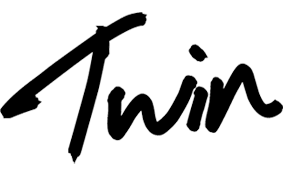
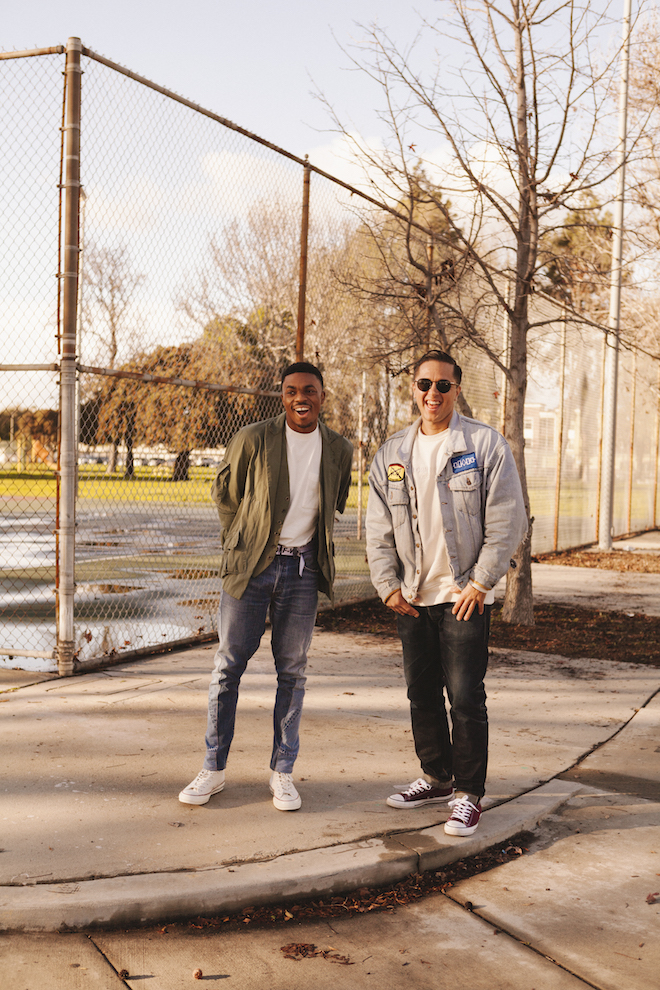
 PREVIOUS
PREVIOUS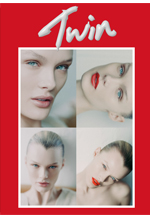
 Twitter
Twitter
 Tumblr
Tumblr
 YouTube
YouTube
 Facebook
Facebook
 Instagram
Instagram
